Projects
Supporting innovative, cutting edge ideas, the Research Innovation Fund (RIF) provides seed grants for cross-college collaborative projects.
How do I apply?
Project Description
Media
Filters
ALL
- Project Types
- All
- Animal Health
- Aquaculture
- Automation and Robotics
- communities
- Communities/Farmers/Relations
- Computational Modeling
- Controlled Environment Agriculture
- Crop Production
- Dairy/Livestock Production
- Data Integration and Processing
- Farmers
- Farmers, Communities, Relationships
- Food Safety
- International Agriculture
- Iot and Networks
- Machine learning
- Machine Learning
- Plant Breeding
- relations
- Sensing Technology
- Soil
- Trustworthy AI
- Years
- Project Creators
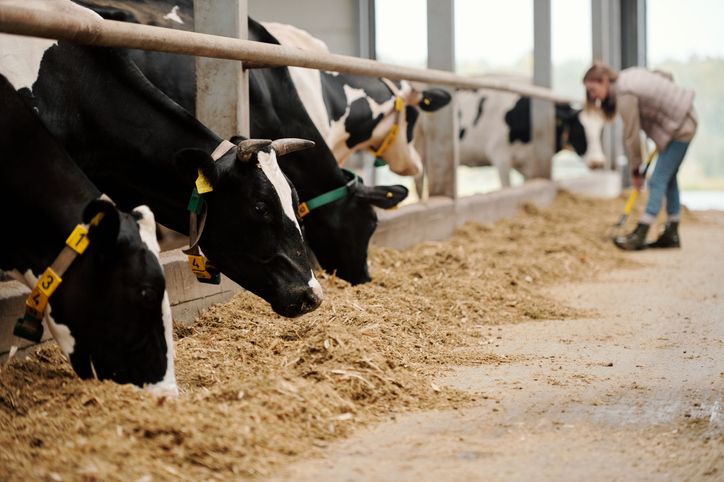
Development of Predictive Models to Accurately Detect Subclinical and Clinical Mastitis in Dairy Cows Milked with Automated Milking Systems
Inflammation of dairy cow mammary glands, or mastitis, is one of the most important diseases in dairy production. Costs related to veterinary service, labor, loss of saleable milk, reduced milk production, and culling make it one of the most costly dairy diseases. In conventional milking systems, detection of clinical mastitis (CM) is straight forward by identification of abnormal milk or a swollen quarter, but subclinical mastitis (SCM) is only identified by a somatic cell count (SCC) ≥ 200,000 cells/mL. Accurate and timely detection of SCM has the potential to improve milk quality and farm economics. We propose to develop predictive models to accurately detect clinical mastitis (CM) and subclinical mastitis (SCM) in dairy cows milked with automated milking systems. These systems automatically provide hundreds of data points from each cow at milking. We will collect quarter level data points, such as milk yield, milking time, duration between milking visits, kick-offs, incomplete milkings, and conductivity, and use them to develop an algorithm for accurate identification of cows at the onset of CM and SCM. Not only will this provide a substantial economic benefit by reducing the costs associated with mastitis, but it will also improve animal welfare. While automated milking systems are still rare in the dairy industry, there is a projected annual increase of 20 to 30% in the coming years, in part as a way of addressing the current labor challenges in the dairy industry. New York State is seen as a leader in the dairy industry both locally, regionally, and globally and development of an algorithm for accurate identification of cows with CM or SCM will keep New York State on the leading edge of adoption of agriculture technology.
Rick Watters (CVM), Kristan Reed (CALS)
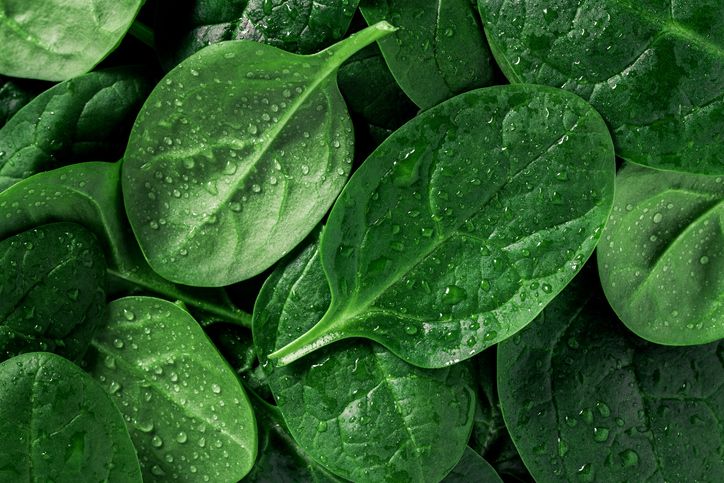
Microbiome-Informed Computational Models and Decision Support Tools to Predict Fresh Produce Spoilage: Spinach as a Model System
Microbial food spoilage is a significant economic, environmental and societal problem: 40% of food in the US is reported to go to waste, with 2/3 of this spoilage being estimated to result from unwanted microbial growth. The goal of this project is to develop a computational model of microbiome interactions and perturbations during processing, transportation and retail for predicting shelf life of fresh spinach. Prediction of food spoilage in the food industry to date is typically based on limited laboratory experiments and shelf-life studies conducted under a single or very few conditions. Actual product however is produced and distributed under a range of very different conditions throughout the supply chain. Hence, there is a need for transformative solutions to reduce food waste using a systems approach, in which innovative technologies are integrated across each stage of the supply chain to reduce the volume of food wasted. In this study, we will construct computational models and decision support tools to predict shelf life using both classical microbiological and metagenomics data. This work will serve as a basis to later develop and pilot transformational strategies to reduce food waste through more accurate shelf-life prediction.
Martin Wiedmann (CALS), Renata Ivanek Miojevic (CVM)
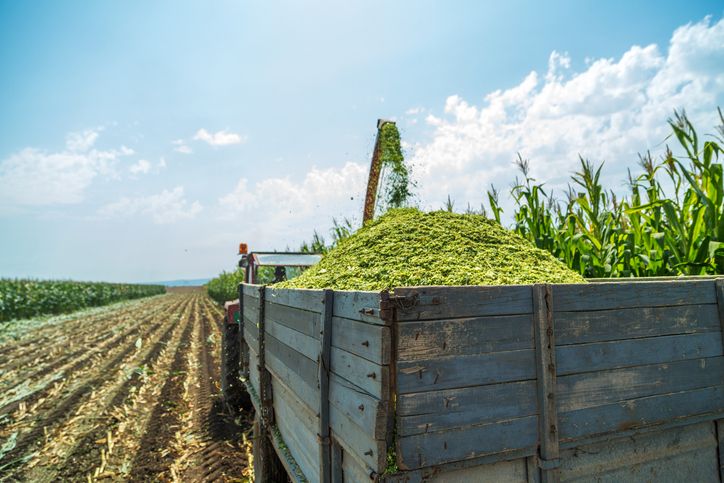
Spectral Prediction of Deoxynivalenol (DON) in Maize Grain, Rachis Tissue, and Silage
Deoxynivalenol (DON) is a secondary metabolite or mycotoxin produced by Fusarium molds. DON contamination in maize poses a major threat to food and feed safety. Conventional detection of mycotoxins involves time and resource-intensive chemical assays. Inexpensive and non-destructive methods for detecting DON based on the spectral properties of grain have shown promising success at various prediction tasks. Grain-based models, however, may not be effective for assessing silage, which consists of mixed maize tissues. Available evidence suggests that the maize rachis can harbor much more DON than grain, but rachis tissues have not been included in spectral models for DON detection. Models that leverage spectral data from both grain and rachis tissue could enable cost-effective DON surveillance in maize silage. To assess the extent of this applicability, we will acquire diverse silage samples from local dairy farms. This model’s performance will suggest how specific our rachis and grain wavelengths are to DON in general, and in turn, how applicable they may be to silage samples.
Chloe Siegel (GR-CALS), Primary Advisor: Rebecca Nelson (CALS), Secondary Advisor: Daryl Nydam (CVM)

Control of Multidrug-Resistant Salmonella Dublin in Heifer-Raising Operations Through Integration of Mathematical Modeling and Economics Approaches
Multi-drug resistant (MDR) Salmonella dublin is an emerging zoonotic pathogen capable of causing severe disease in humans and is also a major concern to dairy cattle operations worldwide, including in New York State. Current gaps in the understanding of the transmission dynamics of MDR S. dublin and the economic feasibility of different mitigation strategies severely challenge the ability of dairy farmers to make informed decisions about cost-effective approaches to safeguard their production. This project proposes to develop a decision support tool that assesses MDR S. dublin control strategies based on integrated mathematical modeling and economic analysis approaches. Based on the results, a web-based interface will be designed to provide model simulation and planning of S. dublin mitigation strategies.
Sebastian Llanos Soto (GR-CVM), Primary Advisor: Renata Ivanek (CVM), Secondary Advisor: Martin Wiedmann (CALS), Tertiary Advisor: Aaron Adalja (SHA)

Developing a Satellite Image-Based Sampling Protocol for Nutrient Monitoring in New York Vineyards
Extension specialists recommend that vineyard managers sample for leaf blade nutrients by collecting a large, random sample in each block each season. However due to the time and effort required, this task is either completely ignored or a biased sample is collected. The goal of this project is to use free, readily available, remotely-sensed images such as Normalized Difference Vegetation Index (NDVI) and Synthetic Aperture Radar (SAR) images to assess vineyard block variability and guide efficient sampling practices. Guided sampling pathways will reduce the labour and fuel required for nutrient sampling, resulting in reduced production costs for NYS grape growers. An additional benefit may be that growers are more likely to sample, resulting in improved environmental sustainability due to more targeted fertilizer applications.
Manushi Trivedi (GR-CALS), Primary Advisor: Justine Vanden Heuvel (CALS), Secondary Advisor: Rowena Lohman (COE)

Noninvasive Measurements on Plant Conditions Inspired by Raindrop-Leaf Interaction
This research will investigate the mechanism of how an elastic leaf interacts with an impacting raindrop, having potential implications for characterizing the water/nutrient condition of plants from the drop-leaf interaction. When the drop hits on a leaf, the leaf flutters differently depending on the properties like stiffness and shape. Based on this fact, we are trying to reveal the functional relation between the leaf motion and its water/nutrient stress. High-speed cameras will quantify the shape deformation of the leaf and sensors will measure vibration. Using a piezo-electric material instead of a leaf, the project aims to develop an innovative engineered system based on this raindrop-leaf interaction to record and store mechanical vibrations subject to drop impact leading to an innovative energy-harvesting device from raindrops.
Jisoo Yuk (GR-CALS), Primary Advisor: Sunghwan (Sunny) Jung (CALS), Secondary Advisor: Kirstin Petersen (COE)
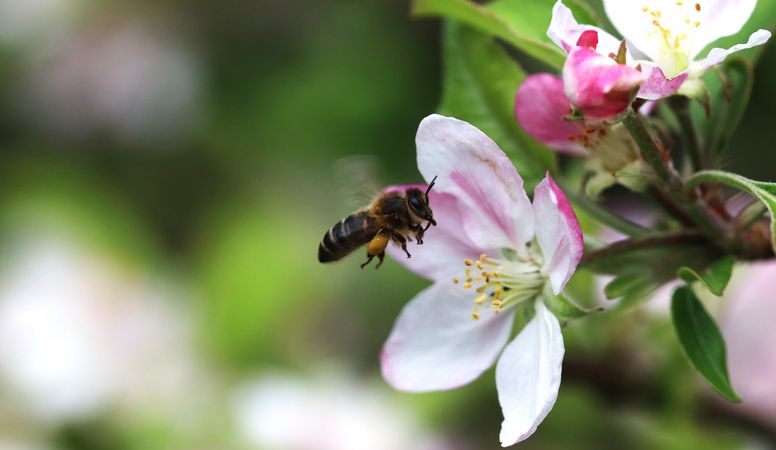
Attracting Wild Pollinators to Orchards: Applications for Sensory Ecology
Insect pollinators are vital for agriculture. Unfortunately, recent pollinator declines threaten food security, biodiversity, and the agricultural economy. Pollinator management typically focuses on honey bees (Apis mellifera), but native bees are often more efficient pollinators. Attracting native bees to agricultural areas is an efficient and sustainable solution to our escalating pollinator crisis. Recent research from collaborators in Cornell Entomology showed that wild bumble bee queens are highly attracted to the nests of other bumble bees, which they try to usurp. I aim to develop a tool that exploits this attraction, encouraging bees to nest and pollinate in orchards. This summer, I will determine what factors nest-searching bumble bees use to locate and select nest sites. The results will inform the design of this tool and fill a gap in our knowledge of this ecologically important species. With this knowledge and integrated grower feedback, we will prototype design for 3D printed artificial nest cavities to simulate natural burrows.
Leah Valdes (GR-CALS), Primary Advisor: Robert Raguso (CALS), Secondary Advisor: Kirstin Petersen (COE)
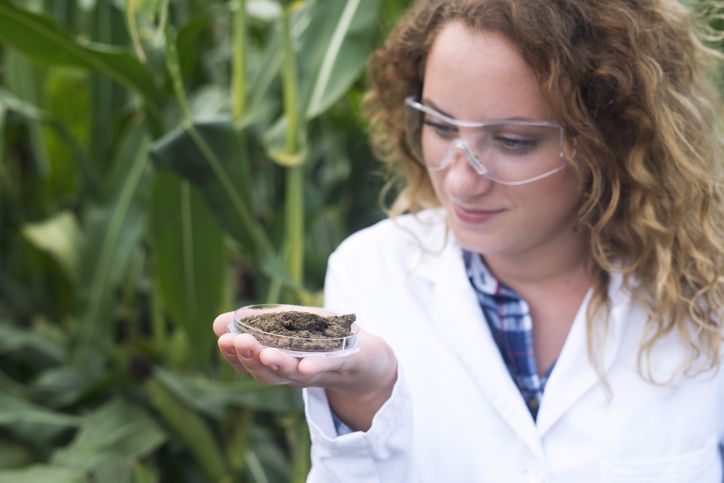
Ultrasonic Imaging for Microbial Natural Products in Agriculture
Soils harbor a tremendous diversity of bacteria that serve as reservoirs for natural products beneficial to agriculture. The majority of soil bacteria are not cultivable under standard laboratory conditions using petri plates and liquid broth cultures. Two decades ago, the rise of metagenomics liberated researchers interested in natural product discovery from the constraints of microbial cultivation but innovative methods to identify bacteria capable of small molecule production are still lacking. We propose a proof-of-concept study on the application of ultrasonic chip imaging for high throughput natural product discovery based on screening of a 100kb soil metagenomic library.
Liang Cheng (GR-CALS), Primary Advisor: Jenny Kao-Kniffin (CALS), Secondary Advisor: Amit Lal (COE)
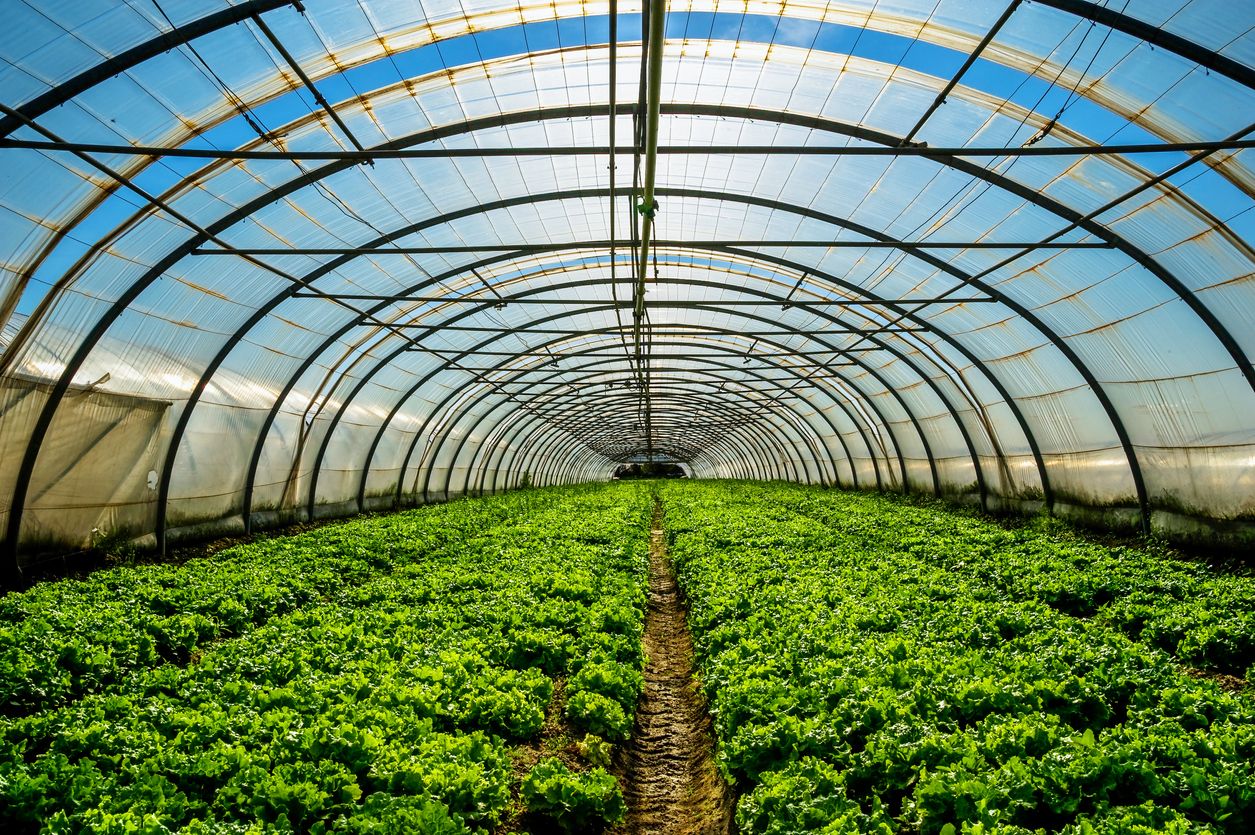
Smart and Intelligent Greenhouse Climate Control with Artificial Intelligence
This research project aims to tackle challenges related to greenhouse climate control by developing a smart and efficient AI-based control framework for greenhouse climate that minimizes costs while maintaining a suitable greenhouse climate for crop growth. In addition, this research will optimize use of resources such as energy and water which are of critical importance, particularly in the era of climate change, further highlighting the importance of efficient greenhouse climate control.
Wei-Han Chen (GR-COE), Primary Advisor: Fengqi You (COE), Secondary Advisor: Neil Mattson (CALS)
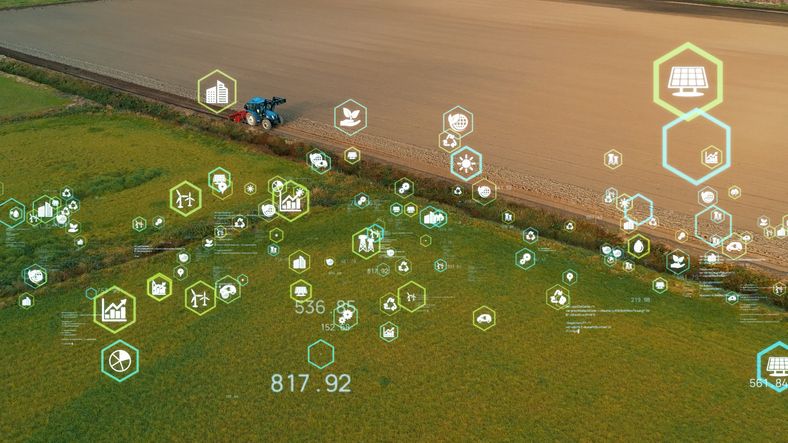
Novel Human-Machine Interface in Agriculture for Better Data Collection and Agronomic Assistance
Digital agronomy has the potential to significantly improve both crop productivity and environmental stewardship by optimizing several aspects of crop management including input placement, resource use, and timing of operations. Curating management data on the farm for digital agronomy applications requires significant time, skill, and attention from the farmer, which explains in multiple instances the limited availability of that data. Without a way to collect farm data systematically and reliably, small and medium farmers may lag behind in the digital revolution happening in agriculture, hindering their ability to remain competitive and meet increasing environmental standards. This project proposes a novel approach to both simplify and improve crop management data collection process with a novel human-machine interface solution. An interactive voice system in the tractor’s cabin can be used to exhaustively collect farm management data more reliably and efficiently than current crop management data recording processes and provide tactical answers to farmers.
Louis Longchamps (CALS), Wendy Ju (CIS), Immanuel Trummer (COE), Diane Bailey (CALS), Mike Stanyard (CALS), Erik Smith (CALS), Michael Hunter (CALS)

Optimization of The Milk Harvesting Process Through Automation and Data Integration
Adequate udder stimulation of dairy cows before milking is critical for the harvest of high-quality milk, traditionally achieved through milk stripping by hand. To date, dairy operations apply a fixed pre-milking stimulation regimen to all cows, irrespective of their physiological needs. This results in delayed milk ejection (DME) in approx. 25% of cows on New York State dairies. Delayed milk ejection leads to poor milking efficiency, impaired teat and udder health, and reduced milk yield. We estimate that DME results in an income loss of approx. $250,000/year on a 1,000-cow dairy. Accommodating the physiological requirements of individual cows in a precision dairy farming system is of utmost importance to optimal milk harvest and animal well-being. To achieve this, a new dimension for automated identification of cows with DME and providing them with additional pre-milking stimulation using automated pre-milking stimulation (APS) systems is critical.
Matthias Wieland (CVM), Julio Giordano (CALS), Paul Virkler (CVM)

Real-time Control of On-farm Water Treatment Infrastructure to Enhance Biological Removal of Nonpoint Source Nitrogen Pollution 
The use of Internet of Things (IoT) tools in agricultural water quality management is a nascent field but holds great promise for innovating decentralized biological treatment systems geared for reducing nonpoint source nitrogen releases from excess fertilizer use. This project proposed to produce a first-of-its-kind testbed IoT-enabled denitrifying bioreactor that will produce novel data on the use of real-time control techniques to enhance nitrate load reductions under real-world conditions. This project aims to retrofit existing edge-of-field denitrifying bioreactors with sensors and actuators to enable real-time control of water levels and labile carbon concentrations in formerly static bioreactors. It will also serve to demonstrate the application of digital tools for agricultural water quality management – and address a critical sustainability challenge for agriculture and food production.
Matthew Reid (COE), Nils Napp (COE), Scott Steinschneider (CALS)

Illuminating Belowground Environments by Harnessing Plant Metabolites for Programmable Plant Phenotyping
In spite of its potentially massive agricultural and economic impact, state-of-the-art methods remain unable to reliably predict plant performance in real-world field conditions. Much of what is known regarding plant performance in controlled laboratory conditions fails to hold true in real-world environments. To facilitate the translation of “lab knowledge” into functional predictions in the field, we will develop an underground biosynthetic sensor that enables the molecular dynamics of belowground processes to be illuminated aboveground. Biosensors will be used to transmit belowground detection of environmentally-responsive flavonoids into the arial half of the plant where these signals can be detected using automated phenotyping. This project will ultimately produce a new transformative technology for interrogating root-environment interactions. This tool can be engineered to detect almost any below-ground interaction that triggers the production of a specific metabolite (e.g. pathogens, beneficial microbes, and toxic compounds), and thus can be widely adapted to address a range of agricultural challenges.
Sijin Li (COE), Margaret Frank (CALS)

Intermediaries in Agtech Systems of Innovation: Between Entrepreneurship and Social Impact
The agricultural innovation landscape is rapidly evolving, and a host of new actors are diversifying a space traditionally dominated by government agencies, public universities, and established agribusiness firms. Globally, investments in agtech start-ups amounted to $30 billion in 2020, representing a 34.5% increase from just the year before (Investable Universe, 2021). Intermediary actors, often referred to as incubators (and accelerators), have arisen in this context to fill a gap in the innovation ecosystem. These incubators often position themselves as mission-oriented – that is, their goals are not only to spawn successful commercial ventures but also to produce positive societal impact by supporting enterprises that contribute to solving social and ecological problems. There is growing interest in metrics, oversight, and reporting protocols to address the challenges of securing and communicating social impact, but these practices are very uneven and very little is known about their performance. This research project stands to generate insights into how entrepreneurs, investors, and innovation intermediaries anticipate, negotiate, and address social impact goals in order to strengthen accountability in innovation ecosystems.
Steven Wolf (CALS), Mukti Khaire (CIS), Gregory Ray (JCB), Zach Shulman (Entrepreneurship at Cornell), Matt Marx (Dyson)

Developing a Smart Feeding System in Fish Aquaculture Systems
Feed is one of the biggest production costs when producing fish. A large amount of the feed produced is currently wasted throughout the feeding process. This causes decreased water clarity and affects fish growth rate. During this research project, visual data will be collected along with data from several sensors, to include but not limited to, pH, dissolved oxygen, and temperature. Once data has been collected, a machine learning algorithm will be created to understand when fish should be fed. The goal of this research project is to implement a “smart” feeder within a research setting and gain valuable knowledge about which data is best to understand when fish need to be fed.
Matt Roohan (CALS); Eugene Won (CALS); Maha Haji (COE)

NMR Measurement of Underground Crops
This project will provide farmers with the ability to estimate the water content (and, consequently, dry matter content) in starchy plants like potatoes and cassava. This will better define the harvest date and allow the growth conditions of the crop to be tuned accordingly. For crop breeders, the success of a new breed can only be determined after the crop has mostly matured (nearly a year for cassava), but with dry matter content measurements throughout the lifecycle of the crop, a breeder can determine the promise of a breed much earlier, perhaps even in the first month. The project depends on how alternating magnetic fields change the orientation of proton magnetic moments in water. A prototype has been created but isn’t yielding results. By adding a second coil, we will troubleshoot and potentially redesign the setup, so we can return a stronger differential output.
Tangia Sun (CALS); Amal El-Gazaly (COE); Mike Gore (CALS)
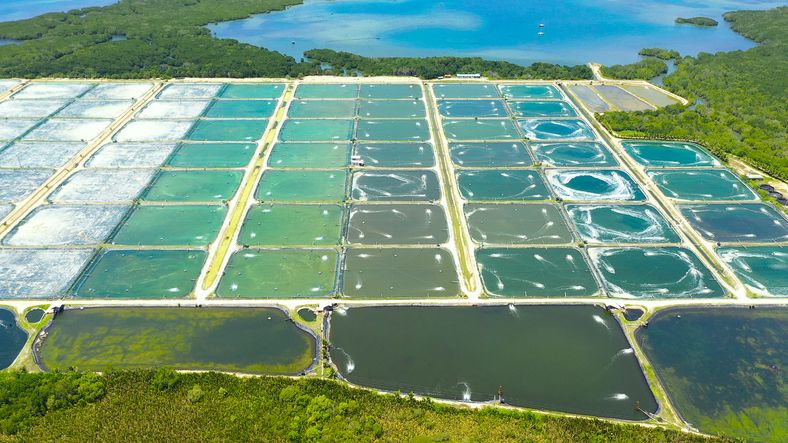
Autonomous Monitoring for Offshore Aquaculture
Aquaculture – with its ability to produce high-quality protein with no need for land, freshwater, or fertilizer – will be key to ensuring adequate food supplies for the world’s growing population. Competition for near-shore space, episodes of poor water quality, and environmental considerations have motivated farmers to shift towards less accessible, more cost prohibitive open ocean farming. Autonomous monitoring can be an effective means of reducing these barriers. Advancements in sensor technologies have allowed for the expansion of remote monitoring in offshore aquaculture farms for water quality and fish behavior. A key requirement of automated offshore monitoring, however, is the transmission of data back to shore. The objective of this research is to design and test an autonomous monitoring system for aquaculture farms that constantly monitors water quality and relays real-time data back to shore via satellite.
Isabel Mejia-Roberts (UG-COE); Maha Haji (COE); Eugene Won (CALS)
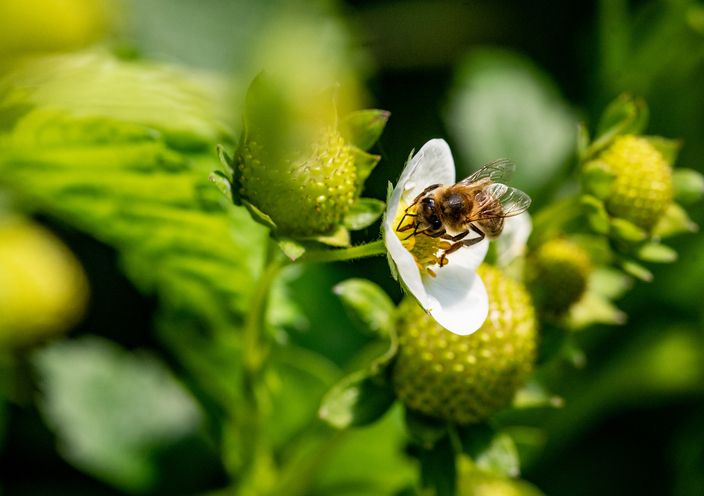
Automated Monitoring of Strawberry Pollination
The world’s food security is highly dependent on pollinators with bees being primary members of that community. Bees are declining at an alarming rate due to several factors including use of pesticides and disease. This decline has made pollination via drone an appealing alternative. Initial studies on drones’ effectiveness to pollinate strawberry plants has proved inconclusive. This work helps develop additional field experiments to validate current data as well as how this data can be employed in an open-source format. Using automated entrance monitors, solar-powered acoustic sensors, and computer programs that use the size, symmetry, and color of the strawberries to create models. The technology developed for this study can help pollinator focused researchers in the future as they explore methods for monitoring the entrance of a hive, understanding the consequences of pollinator interactions with strawberry plants, and the use of acoustic monitors in a field to measure the presence of wild bees as well as other pollinators.
Tallisker Weiss (UG-CALS); Kirstin Petersen (COE); Scott McArt (CALS)
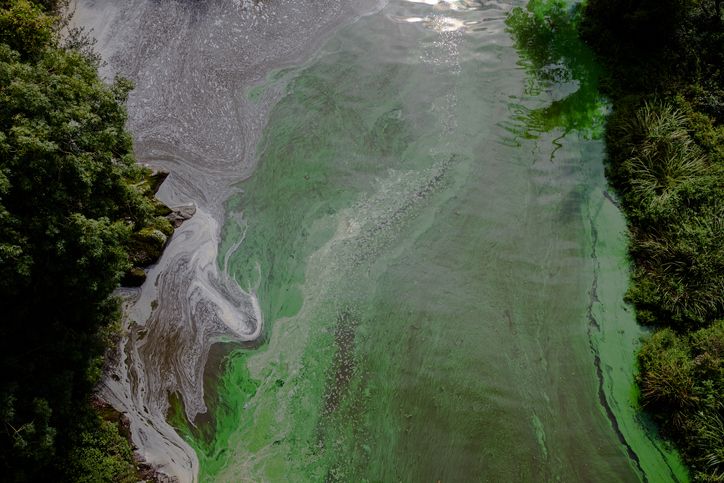
Using Real-Time Control and Internet of Things Capabilities to Improve On-Farm Denitrifying Bioreactor Performance
Agricultural systems need to increase food production to feed a growing population while mitigating the negative impacts of nitrogen fertilizers on water and climate. Nitrogen runoff from agriculture can cause groundwater to have excess nitrogen which can increase greenhouse gas emissions, damages to the ozone layer, acidification of soils and water bodies, and dead zones in coastal areas and estuaries. The goal of this project is to help develop accessible and easily implementable technology using an autonomous woodchip bioreactor and Internet of Things (IoT) to help enable farmers to limit the export of nitrogen to groundwater and surface water ecosystems through real-time data and feedback and help prevent excess nitrogen pollution.
Sofia Echavarria (UG-CALS); Matt Reid (COE); Scott Steinschneider (CALS)
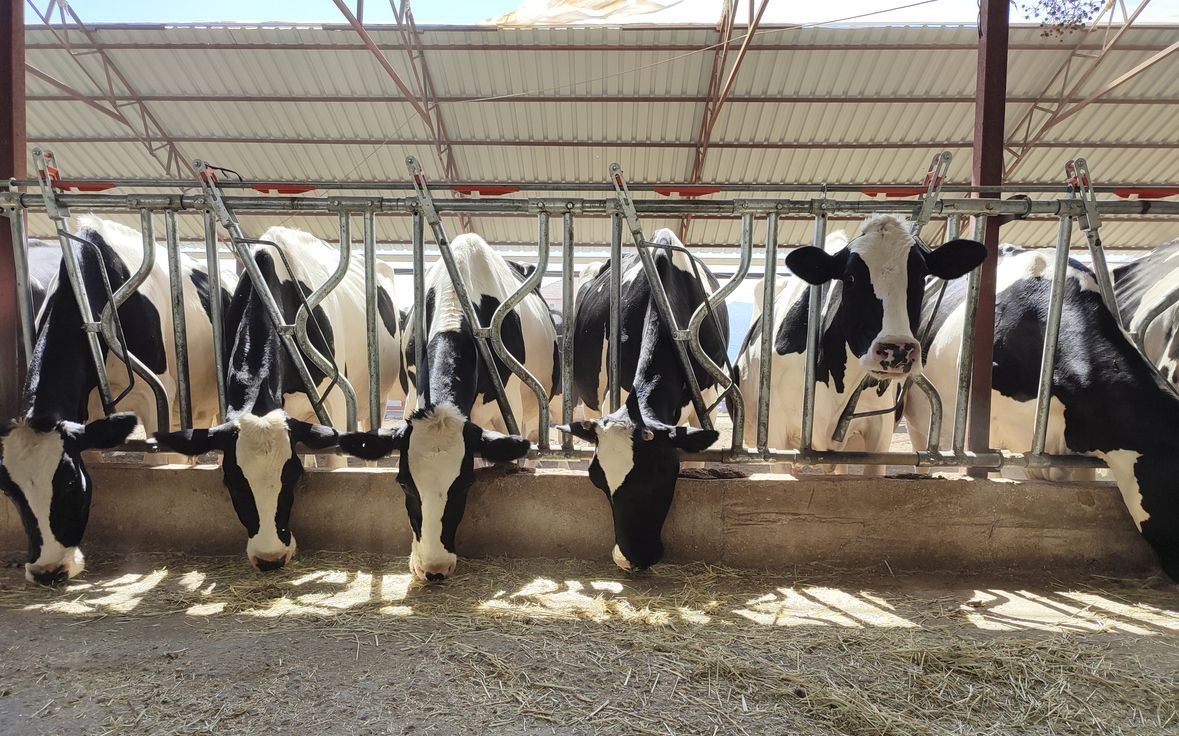
What Can Rumination Time Tell Us About the Blood Calcium Status of Early Lactation Dairy Cattle?
Subclinical hypocalcemia (SCH) affects over 40% of multiparous dairy cows in early lactation. Arising from a drop in blood calcium (Ca) after calving due to the increased demand for Ca to support lactation. Delayed or prolonged episodes of SCH are associated with decreased production and feed intake, increased risk of additional diseases, and herd removal. Previous reports have shown that daily rumination time (RT) is positively correlated with blood Ca in the early lactation period. As many farms have already implemented sensors to track RT of cows, the results of our study can be incorporated into the preexisting software as an alarm, providing a practical method of identifying cows experiencing delayed or prolonged SCH. By identifying these cows either before or as they are experiencing reductions in blood Ca, more targeted treatment and management strategies can be implemented to reduce the risk of additional disease development, thus improving cow health and productivity as well as farm profitability.
Claira Seely (CVM); Jessica McArt (CVM); Julio Giordano (CALS)

Exploring Options for Nutrient and Energy Recovery from Aqueous Phase of HTL – a Techno-Economic Analysis
Hydrothermal Liquefaction (HTL) is a strong candidate for dealing with wastes, including those from agriculture (e.g. chicken/ cattle manure, food waste, and other lignocellulosic biomass feedstocks) by separating waste into various reusable components. A hinderance for separation on a larger scale is fouling that can occur early in the HTL process. In this research we plan to explore pretreatment options as a step to nanofiltration via membrane separation and related processes. To this end we will explore the option of wet air oxidation in relation to existing technologies that employ activated carbon filtration. Wet air oxidation may allow for the capture of additional nutrients and energy during the aqueous phase (AP) enhancing the sustainability and the development of products of additional value and marketability from HTL of agricultural waste.
Kalash Pai (CALS); Jefferson Tester (COE); Xingen Li (CALS)
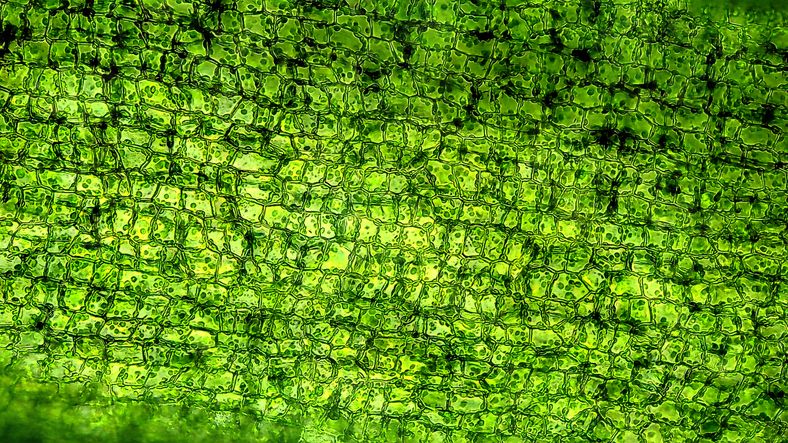
Genetically Encoded Biosensors for Plant Water Stress
Creating digital interfaces that allow plants to communicate their needs to humans and automated control systems has the potential to revolutionize agriculture. A system of sensors that can provide a dynamic readout of plant metabolic needs and state of stress is a necessary and currently missing component of this interface. Towards this end, we propose to develop genetically encoded biosensors that provide insight into plant cell stress, including stress related to water deficiency. The proposed sensors are based on a successful design that has been developed for quantifying macromolecular crowding in mammalian cells using FRET (Forster resonance energy transfer) while accounting for spectral interference from the chlorophyll. By overcoming this challenge, we hope this work will help develop sentinel “stress sensor plants” in crop fields can provide a real-time readout of water stress for precise and intelligent irrigation.
Ling-ting Huang (COE); Matt Paszek (COE); Adrienne Roeder (CALS)
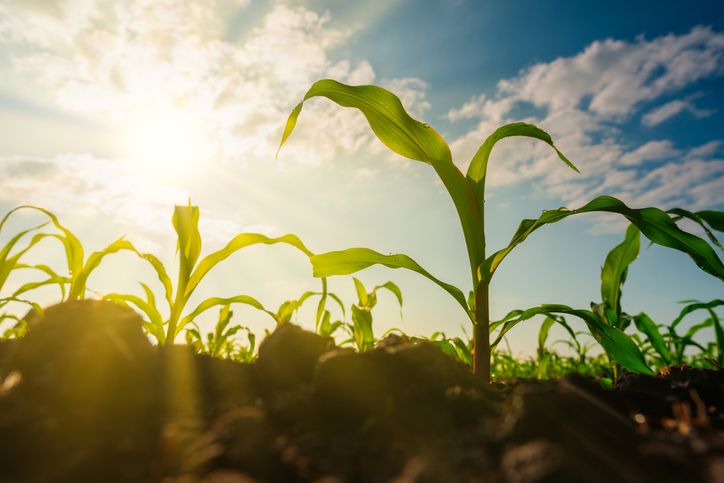
Multi-sensor Crop Monitoring Platform
This project intends to build a ground-based crop monitoring platform that can analyze crop physiology and canopy characteristics by collecting data during the growing season of maize. Several sensing technologies including a line sensor, an RGB camera, and a lidar will be equipped to the platform to help collect crop physiology data at a high frequency. This platform will be deployed on a maize field of the campus farm where researchers can obtain accurate trends of the maize growth. Currently, the platform works well in a laboratory environment but faces issues in the field due to the effect of the bright sunlight on the ability of sensors to measure crop height at high throughput. The goal is to debug and improve the existing line sensing sensor so that it works on real farms with robustness. If time permits, an automated movement, and navigation system can be added to the platform. This allows the platform to travel straight along a row of maize while collecting data on its own.
Chenxi Qian (GR-COE); Louis Longchamps (CALS); Joseph Skovira (COE)

Multi-sensor Crop Monitoring Platform
This project intends to build a ground-based crop monitoring platform that can analyze crop physiology and canopy characteristics by collecting data during the growing season of maize. Several sensing technologies including a line sensor, an RGB camera, and a lidar will be equipped to the platform to help collect crop physiology data at a high frequency. This platform will be deployed on a maize field of the campus farm where researchers can obtain accurate trends of the maize growth. Currently, the platform works well in a laboratory environment but faces issues in the field due to the effect of the bright sunlight on the ability of sensors to measure crop height at high throughput. The goal is to debug and improve the existing line sensing sensor so that it works on real farms with robustness. If time permits, an automated movement, and navigation system can be added to the platform. This allows the platform to travel straight along a row of maize while collecting data on its own.
Chenxi Qian (GR-COE); Louis Longchamps (CALS); Joseph Skovira (COE)

Engineering Real Weather Wind Tunnel for Experimental Agriculture at Field Scale
Corn earworm (CEW) is an annual pest of NY sweet corn crop. NY is one of the largest producers of sweet corn with a production value of $37 million. Monitoring is the best defense against CEW, helping growers determine the insecticide application timing. Current monitoring practice relies on trapping using a pheromone lure. However, the connection between trap catches and in-field counts is imperfect. To make the correlation stronger, we need a better understanding of how pheromone spreads in the cornfield under realistic environmental conditions and how CEW responds to the pheromone. This summer we will specifically focus on understanding how wind condition changes the pheromone distribution by building a wind tunnel array and measuring the pheromone’s spread. This will provide a valuable pesticide usage guideline for growers, allowing for well-timed use of pesticides informed by improved CEW monitoring, which can reduce yield loss and limit the unnecessary application of pesticides, thereby benefiting both the growers and our environment.
Jena Shields (GR-COE); Chris Roe (COE); Jennifer Thaler (CALS)
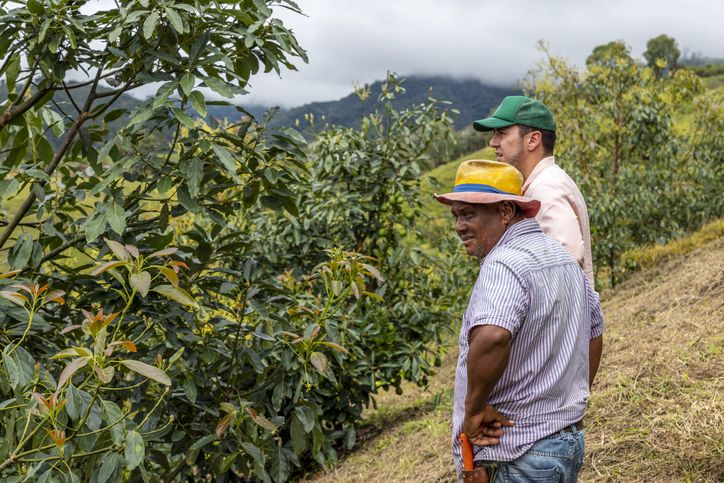
Emerging Digital Phenotyping Technologies in Colombia and Prospects for Social Impact
The goal for this project is to conduct interdisciplinary research to learn about the values that inform digital phenotyping technology development and the actors that are likely to benefit through examining a case study of plant breeders at the Alliance of Bioversity International and the International Center for Tropical Agriculture (CIAT) in Colombia. The Alliance is part of the Consultative Group for International Agricultural Research (CGIAR) and continues to play an important role in promoting Green Revolution technologies across the Global South. Digital phenotyping technologies are increasingly used to generate specific information on crops to aid plant breeders in finding and developing optimal varieties. Nevertheless, research suggests that the increased adoption of high-yielding, hybrid seeds during the Green Revolution concurred with the standardization of farms and the promotion of industrial monocultures.
Lara Roeven (GR-CALS); Steven Wolf (CALS); Phoebe Sengers (CIS/CAS)

A Social Network for Dairy Cattle
The analysis of animals’ behavior is an essential part for understanding their state of health, in many senses. A body condition score (BCS) can be used as a part of such analysis: such a score is based on estimates of fat on the animals’ upper hind quarters, coat condition, visibility of bone structure, and other indicators. When coupled with other metrics, such as biometric data, milk quantity and quality data, etc, we arrive at a data set that can be used as an input for predicting reproductive performance and productivity, and even effectiveness of nutrition, heat stress, and other health factors. Images / video footage of dairy cattle can serve as input in the task of classifying the health situation of that individual. More specifically, by extracting features from pixels, a deep learning model can learn the underlying correlation between the input pictures and the overall BCS of those cattle. These results would then be utilized for constructing a network of social networks of cattle. This social network can visualize all important indicators for the health of the individual cattle and the herd and become a powerful tool for the animal experts and digital farms.
Tiancheng Yuan (GR-COE); Ken Birman (CIS); Julio Giordano (CALS)
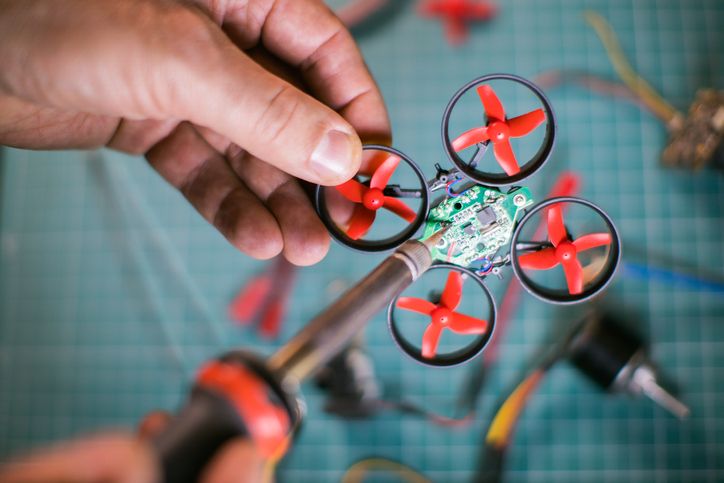
Berry Construction
Tackling high throughput plant phenotyping, the Berry Construction project aims to bridge the quality advantages of structured laboratory 3D reconstruction and the scalability of outdoor, small-scene reconstruction with a scalable, low-cost 3D scanner. While fluoroscopy analysis from 2D images has garnered much success in plant phenotyping, such analysis in 3D is largely unexplored. In 3D reconstruction, plants pose as challenging subjects from which extracting high quality geometries and textures is difficult. Using an ensemble of cheap cameras like Pi v2 cameras to synchronously capture images, we aim to overcome reconstruction artifacts like phantom limbs and lighting inconsistencies commonly found in-field methods. In the long run, we plan to deploy a fully active perception phenotyping system through a swarm of microdrones which we hope will substantially reduce the total pesticide residuals which can have negative effects on the environment and biodiversity
Jonathan Moon (GR-CALS); Yu Jiang (CALS); Tapo Bhattacharjee (CIS)
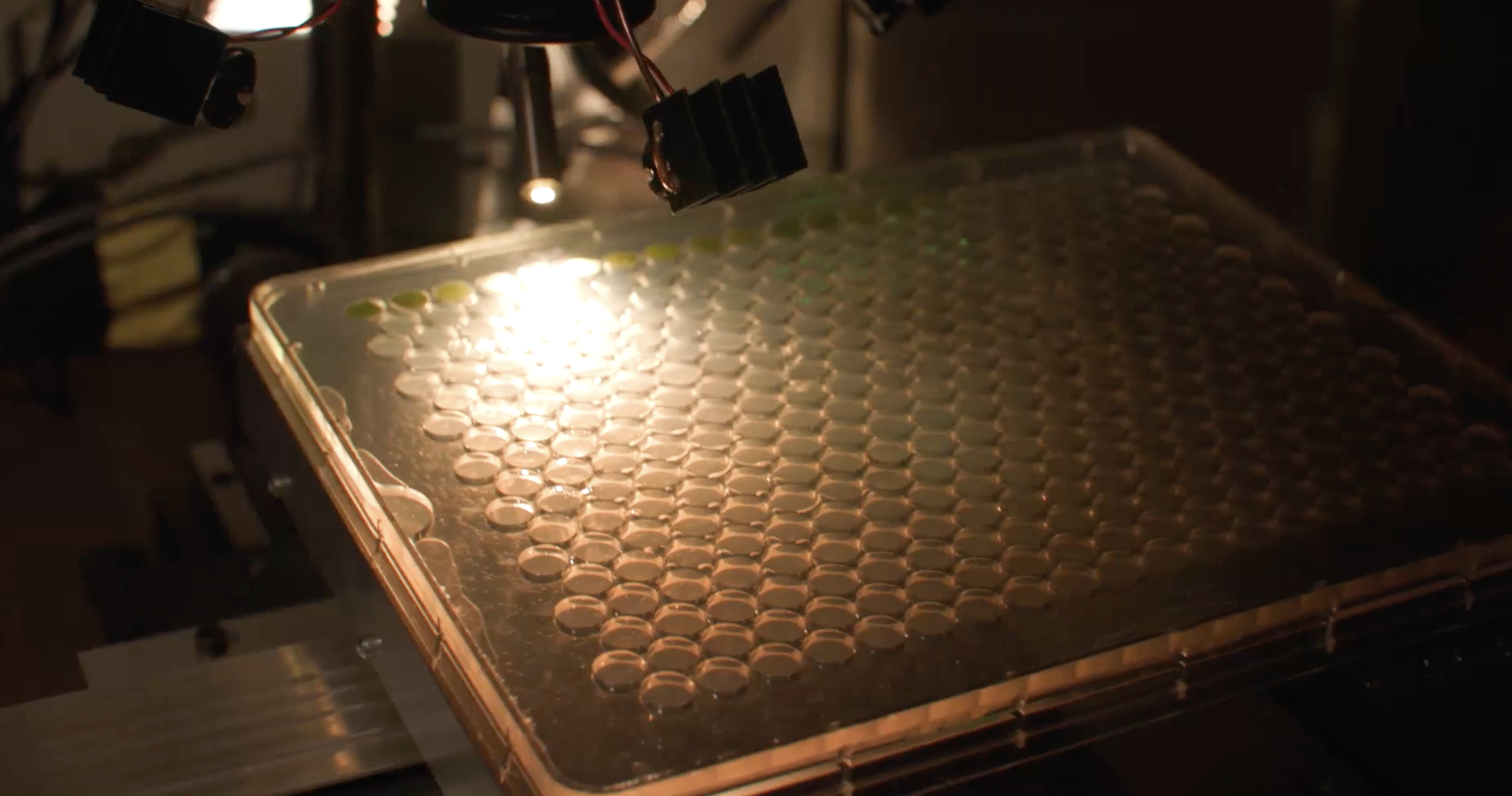
Human-Centered Hyperspectral Sensing Robot and Analysis System for Plant Stress Research and Management
Sensing, robotics, and artificial intelligence (AI) are the leading edge of a technological revolution in agriculture. Present barriers unnecessarily destroy users’ interest in technology adoption, constraining HTP and DA applications to a narrow slice of what should be a broad, if not all-encompassing stakeholder base. This project proposes to develop a human-centered hyperspectral sensing robot and analysis system that enables not only critical research experiments but also confident adoption of AI technologies for data analysis and decision recommendations, moving from highly controlled to more complex systems.
Yu Jiang (CALS), Qian Yang (CIS), Katie Gold (CALS), Hans Walter-Peterson (CALS), David Gadoury (CALS), Lance Cadle-Davidson (CALS)
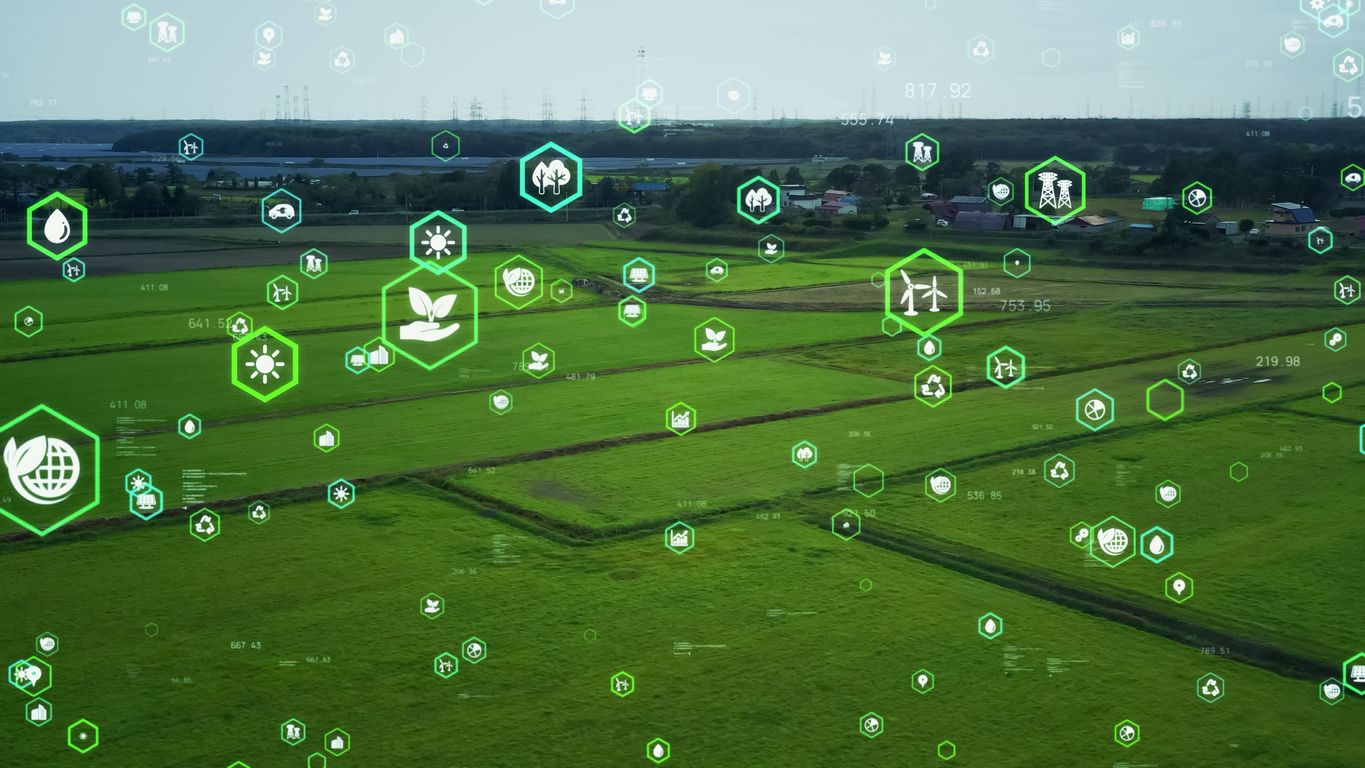
Expanding design of agricultural IoT to address practices beyond production (planning grant)
The proposed work explores ways to expand the design space of “Internet of Things” (IoT) agricultural technology by cross-informing work in social studies of agricultural technology with cutting-edge design research. Most digital agriculture aims to improve the productivity, profitability, and/or predictability of farming while reducing environmental costs. In this project, we propose to expand the range of agricultural IoT design by focusing attention on what we term “practices beyond production.” Recognizing that farms are not simply sites of rational food production, our work explores the potential for the design of agricultural IoT systems to address non-economic issues such as vocational and family values of farmers, human-animal-plant relations and care relationships, and farms’ participation within their rural communities.
Phoebe Sengers (CIS), Lee Humphreys (CALS)
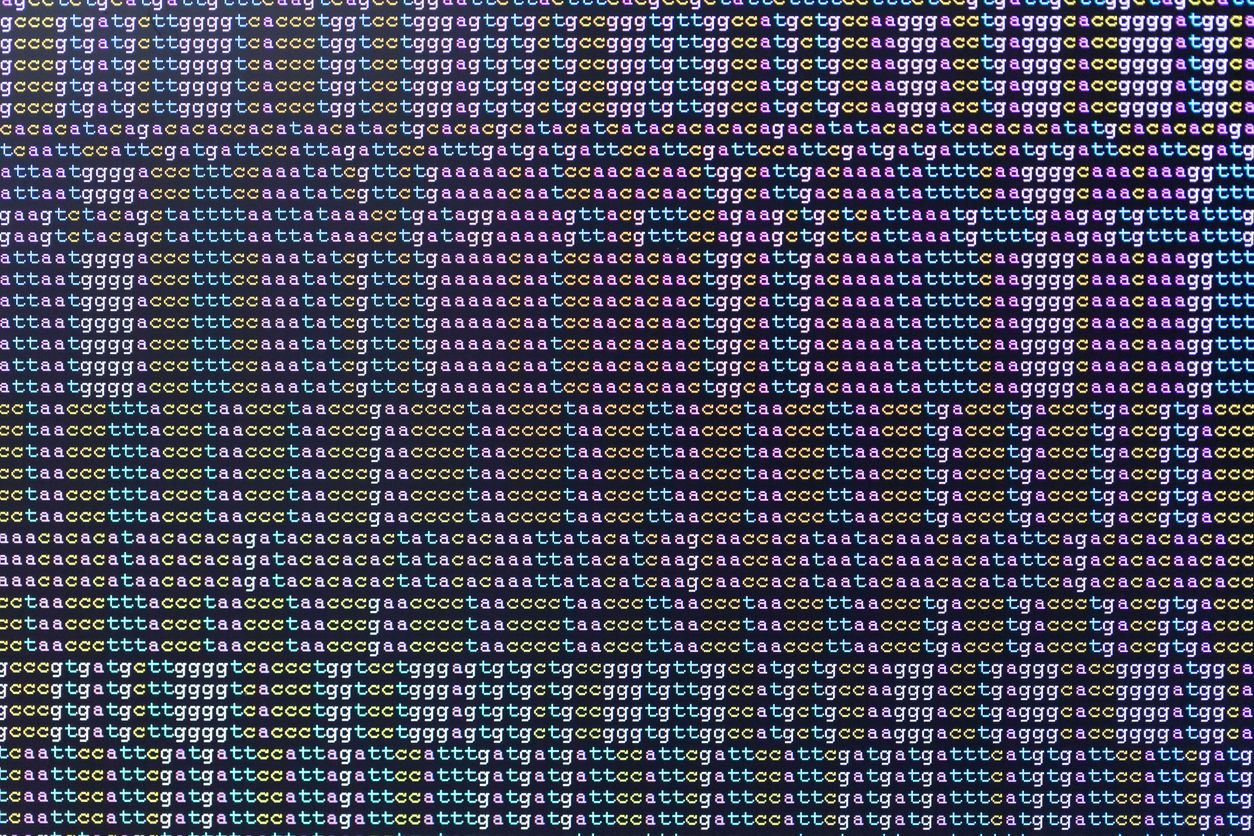
Accurate and Affordable Genotype Imputation for Plant Breeding Based on Machine Learning
Advances in technology are enabling the collection of vast amounts of genetic and phenotypic plant data. This data can help explain the genetics of traits important in agriculture and contribute to the development of sustainable food systems. The long-term vision underlying this project is to understand how genetics and the environment determine phenotypes important in agriculture and use this knowledge to develop methods and protocols for improved plant breeding. Central to this effort will be the development of techniques and frameworks in machine learning that enable modeling complex genetic datasets. If successful, these efforts will enable breeding crops that are more nutritious, require less water and fertilizer, and resist disease, ultimately improving human and environmental health.
Volodymyr Kuleshov (CIS), Jaehee Kim (CALS), Kelly Robbins (CALS), Edward Buckler (USDA)
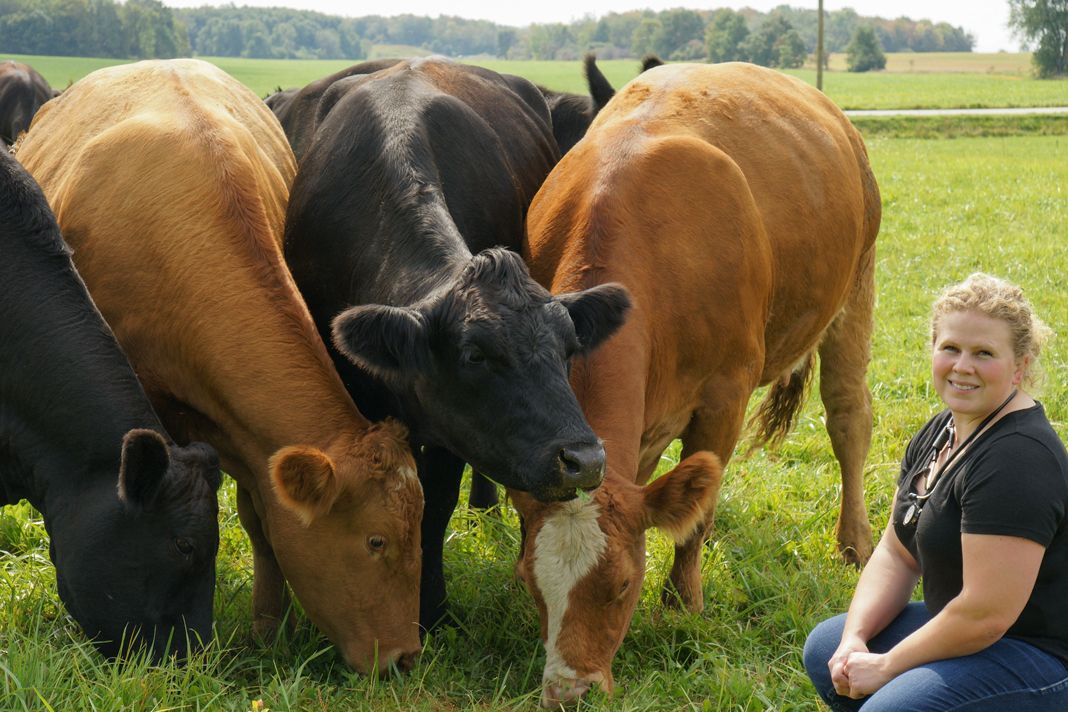
Design and development of a multimodal sensing technology to characterize and quantify changes in suckle behavior in dairy breed calves that experience pre-weaning morbidity events
There is growing interest in the use precision technologies for dairy calf management. However, there are currently few sensors commercially available and validated for use in this population. The objective of this project will be to develop novel and rugged multimodal sensors for integration with automated milk feeding stations; to measure and characterize suckle behavior including pressure sensing (pattern, duration, speed), oral contact temperature (at the point of maximum contact on the palate), and vibrations (created while breathing during suckling) in healthy and diseased pre-weaned dairy breed calves; and, to determine associations of changes in these parameters with morbidity and mortality outcomes in dairy breed calves prior to weaning. The ability to detect subtle physiological and behavioral derangement in group housed calves fed by automated milk feeders will improve early disease detection in dairy calves, inform decisions on disease intervention, monitor recovery, and improve overall calf health and welfare.
Taika von Konigslow (CVM); Tapomayukh Bhattacharjee (CIS)

Optimized pathogen environmental monitoring program in food processing facilities through reinforcement learning and privatized federated learning algorithms
The key challenges in pathogen environmental monitoring programs stem from the high cost in testing and experimentation, the high risk in contamination and outbreak, and the reluctance of individual facilities to share data due to privacy and liability concerns. This project uses Listeria monocytogenes contamination in food processing facilities as a model to develop new digital-twin models augmented with privacy-guaranteed machine learning solutions for food safety assessment. This proposed integrative framework will provide optimized allocation of testing resources, risk-averse prediction of effective corrective measures, and privacy guarantees to incentivize data sharing among stakeholders and be used as a model for future food safety systems.
Renata Ivanek (CVM), Martin Wiedmann (CALS); Jayadev Acharya (COE), Qing Zhao (COE)
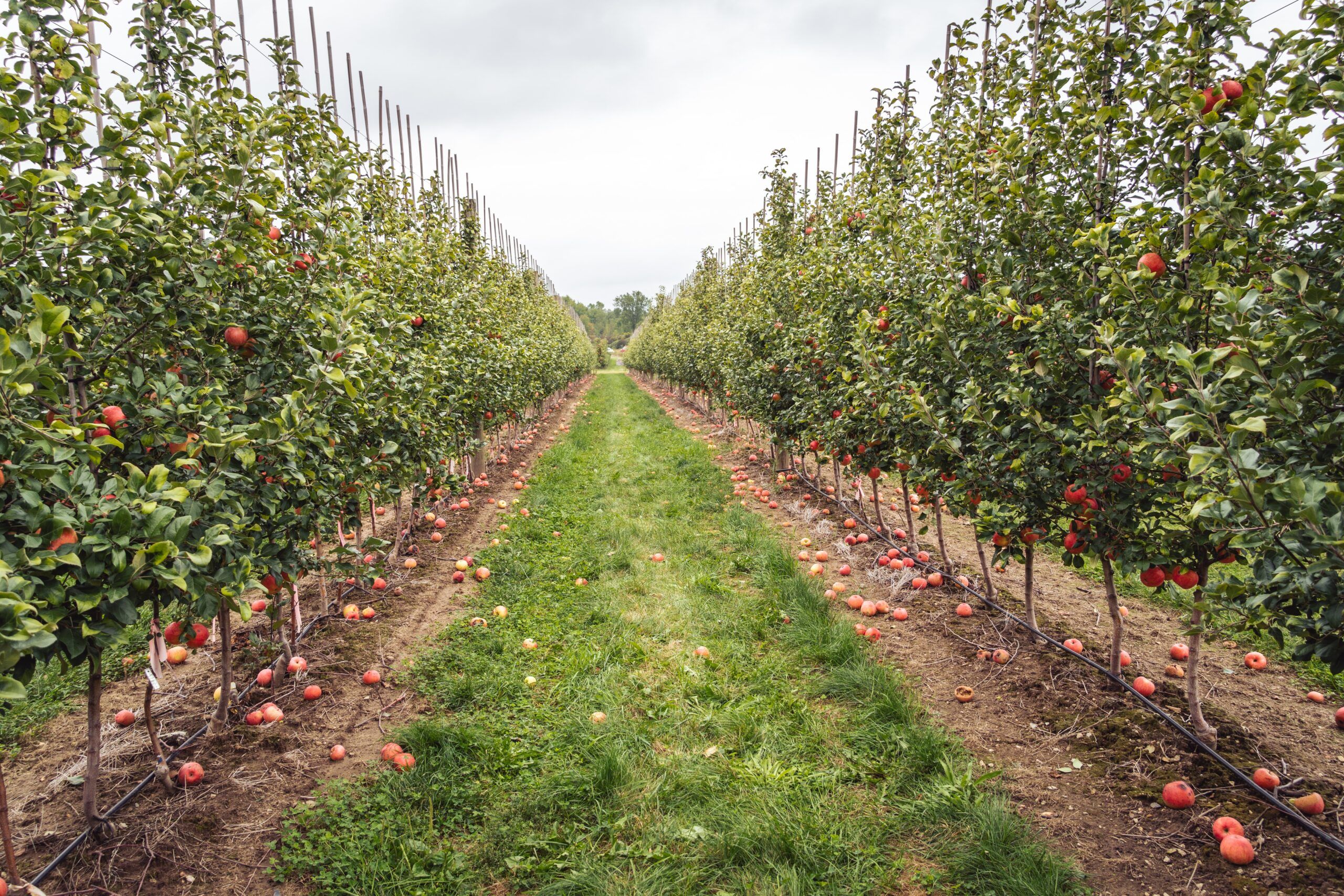
Quantifying 3D vegetative growth and light environment for orchard trees with terrestrial lidar and computational modeling
In orchard plantation systems, vegetative growth is a critical plant ecophysiological process that regulates tree architecture, carbon sequestration, and production of tree crops. Tree carbon allocation and growth patterns are determined by both genetic differences and tissue-level micro-environment. However, accurate and cost-effective quantification of tree vegetative growth has been challenging, especially at fine spatial scales (e.g. branch-level). In this project, we propose to use portable terrestrial laser scanning (TLS) to track fine-scale 3D changes in leaf area and woody volume for several cultivars of apple trees. The project will generate public and accessible workflow and software to quantify 3D tree architecture and vegetative growth and enhance our quantitative and predictive understanding of plant carbon allocation, which can guide sustainable management (e.g., pruning and optimizing carbon sequestration) for tree plantations and forests.
Xiangtao Xu (CALS); Steven Marschner (CIS)
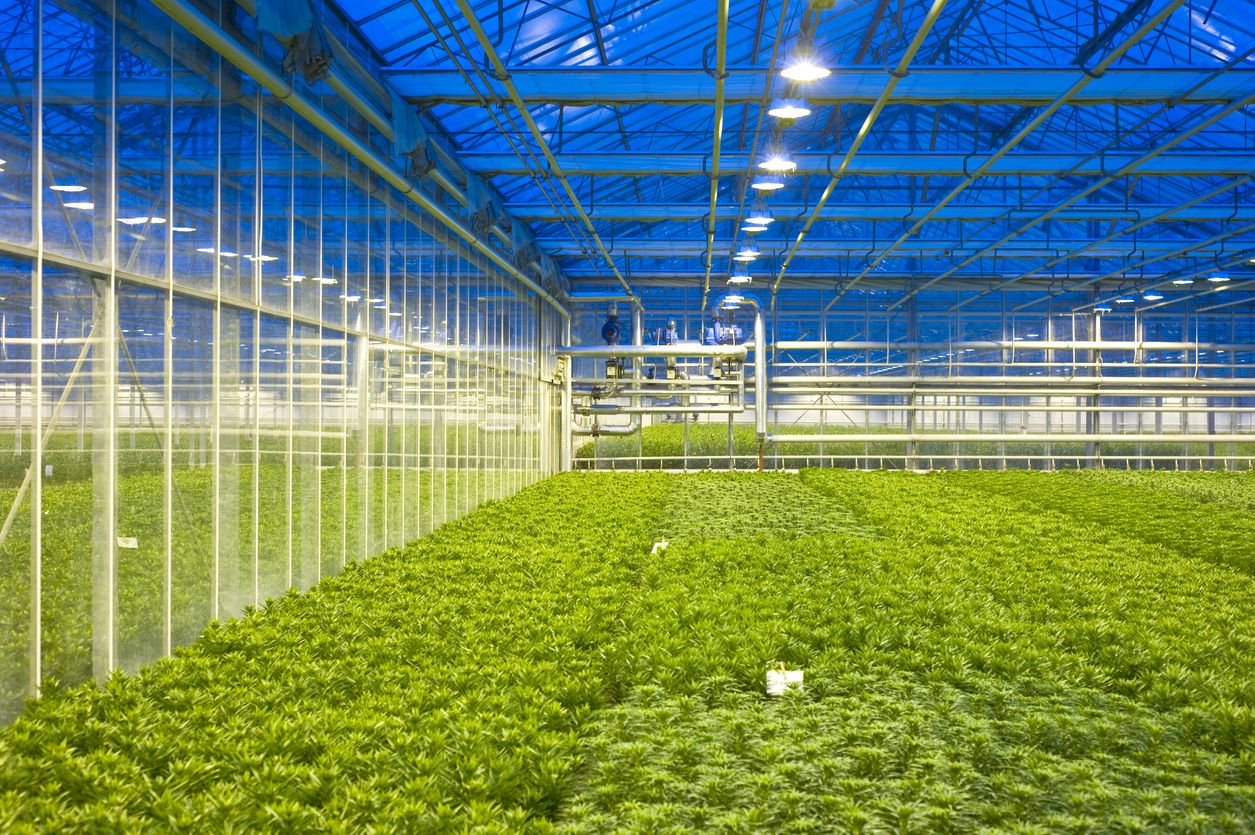
Advancing Autonomous Greenhouse Technology with AI for Sustainable Food and Plant Production in Controlled Environment Agriculture
Controlled environmental agriculture (CEA) is a technology-based approach to sustainable food production using facilities like semi-closed greenhouses and exhibits advantages in terms of a potential higher productivity and quality, as well as robustness to external climatic conditions. CEA has been considered as a popular approach to food production at locations with harsh climate condition, in Space Farming and Urban Agriculture, and for the emerging portable plant factories within shipping containers. While the availability of skilled growers capable of managing high-tech greenhouses remains scarce, the increasing adoption of advanced Digital Tools enables the development of automatic and efficient operations in high-tech greenhouses to further improve the productivity and reduce the cost. This project aims to address technological challenges by integrating artificial intelligence (AI), sensing, mobile robots, and Internet of Things (IoT) tools and methods to develop a state-of-the-art digital platform for autonomous greenhouse to address an emerging and important problem that has the potential of paving the way of future farming practices that could be resilient to the climate, location, and space constraints.
Fengqi You (COE); Neil Matteson (CALS); Yu Jiang (CALS)

Advancing Autonomous Greenhouse Technology with AI for Sustainable Food and Plant Production in Controlled Environment Agriculture
Controlled environmental agriculture (CEA) is a technology-based approach to sustainable food production using facilities like semi-closed greenhouses and exhibits advantages in terms of a potential higher productivity and quality, as well as robustness to external climatic conditions. CEA has been considered as a popular approach to food production at locations with harsh climate condition, in Space Farming and Urban Agriculture, and for the emerging portable plant factories within shipping containers. While the availability of skilled growers capable of managing high-tech greenhouses remains scarce, the increasing adoption of advanced Digital Tools enables the development of automatic and efficient operations in high-tech greenhouses to further improve the productivity and reduce the cost. This project aims to address technological challenges by integrating artificial intelligence (AI), sensing, mobile robots, and Internet of Things (IoT) tools and methods to develop a state-of-the-art digital platform for autonomous greenhouse to address an emerging and important problem that has the potential of paving the way of future farming practices that could be resilient to the climate, location, and space constraints.
Fengqi You (COE); Neil Matteson (CALS); Yu Jiang (CALS)
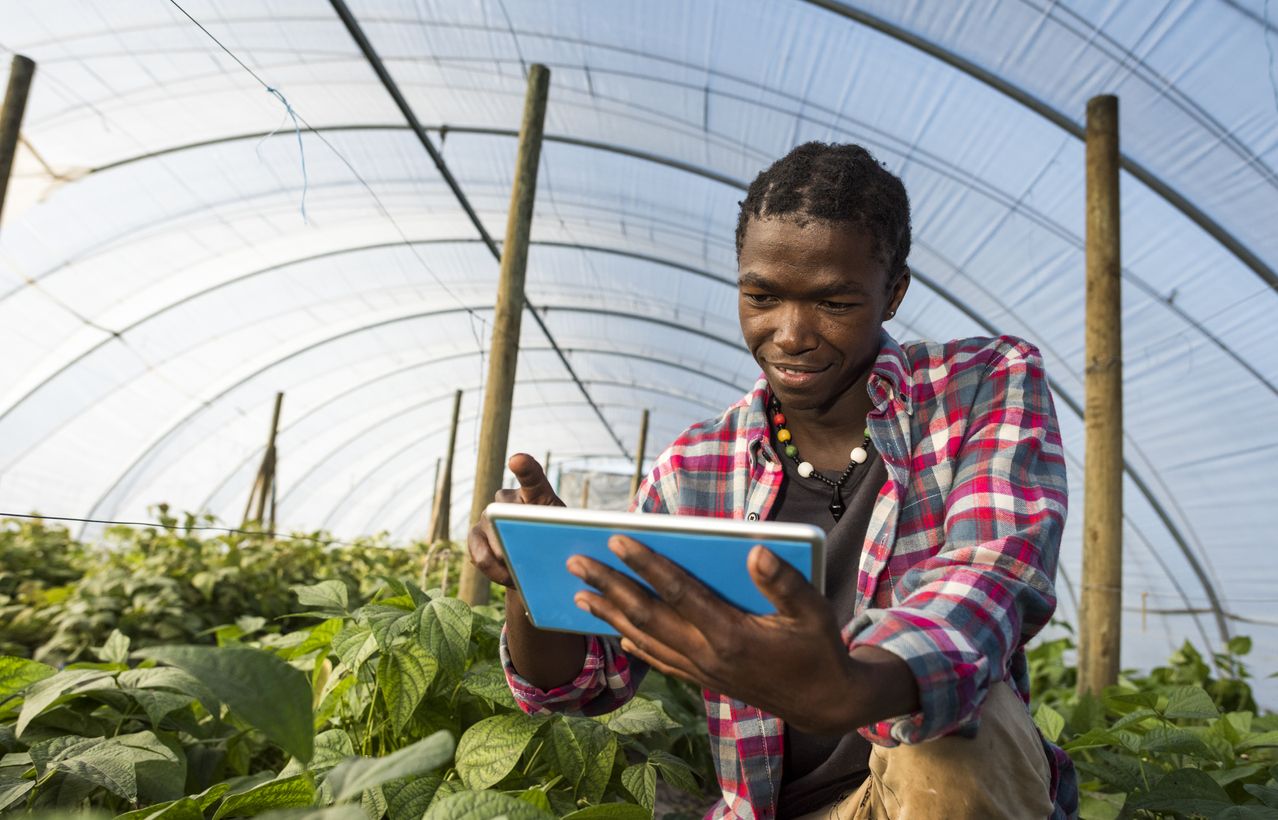
The impact of COVID-19 on digital agriculture SMEs in Kenya
The COVID-19 pandemic has been a test of the fragility of the global food and agricultural systems. Particularly, the pandemic heavily weighed down the agri-food systems in developing countries. Nonetheless, the outcomes of the pandemic are creating robust opportunities geared towards the sustainability and resilience of the global agri-food systems. In the agri-food value chain this surge in demand has accelerated the growth of digital agriculture SMEs. The foundation of this research project is built on exploring how the COVID-19 pandemic has impacted digital agriculture SMEs in agribusiness value chains of frontier markets through measuring things like disparities (e.g., gender differences) in subscriptions, the impact of COVID-19 on sales and turnover of SMEs, and the socio-economic and political environment.
Jeff Kangacha (UG-CALS), Primary Advisor: Ed Mabaya (CALS), Secondary Advisor: Jaron Porciello (CALS)
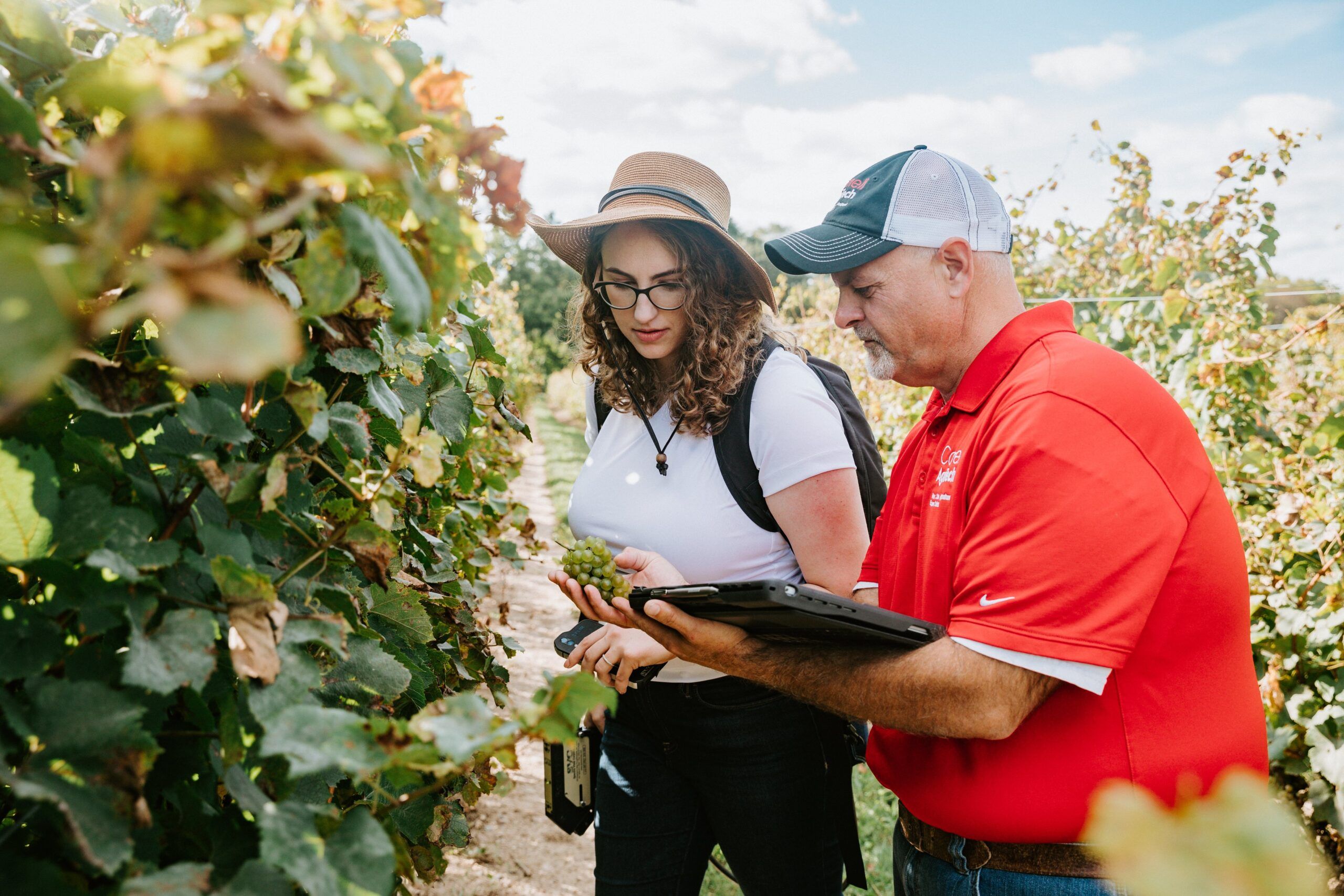
Accelerating the application and adoption of remote sensing decision support in Northeastern viticulture
This project proposes to accelerate the application and adoption of remote sensing in Northeastern viticulture through an approach focused in research and extension with large implications for the NYS grape-growing region and the empowerment of local farmers. Remote sensing is a widely popular tool in most major grape growing regions of the world but has yet to be adopted in the eastern U.S. Using a combination of high resolution (sub-1m) satellite imagery, hyperspectral solar induced fluorescence (SIF), and synthetic aperture radar (SAR) sensing data the project will develop new methodology for crop and disease management in conjunction with CCE and in partnership with eight local growers. Research results will guide the project vision to develop an integrated decisions support system informing early crop and disease management intervention.
Katie Gold (CALS), Rowena Lohman (COE), Justine Vanden Heuvel (CALS), Ying Sun (CALS), Terry Bates (CCE), James Meyers (CCE), Jennifer Russo (JCB), Alice Wise (CCE), Hans Walter-Peterson (CCE), Yu Jiang (AgriTech)

Automating management of teat tissue condition in dairy cows through machine learning
Mastitis, a significant concern in the dairy industry due to marked reduction in milk production and the reduced immune system for dairy cattle, is assessed through physical examinations of a dairy cow’s teat health. This costly, time-consuming approach is error prone and labor intensive. This project proposes first to use a multi-modality machine learning system to measure for short term changes in teat tissue while also developing an image and video based deep learning classifier to predict long-term changes. The sensitivity and specificity of the machine learning system will be compared with the traditional, manual approach. Results will potentially impact current milk harvesting strategies, the advancement of udder health, animal well-being, and sustainability of farms with local impact in the NYS dairy industry and across the globe.
Basran (CVM), K. Weinberger (CIS), I. Porter (CVM), M. Wieland (CVM), J. Giordano (CALS)

Sociology of Myanmar’s Emerging Agritech
This project focuses in emergent agritech initiatives in Myanmar, a nation that came online only after a democratizing government shattered the military telecoms monopoly in 2014. The research contributes to the growing fields of digital political ecology, digital agriculture, and critical data studies by ethnographically investigating how new farmer extension apps, drone-spraying services and digital cooperatives are reshaping relationships between people, food, and land. Building on interviews and participant observation, a case study will be developed into a manuscript to be submitted to the Global South to Agriculture and Human Values or Geoforum in Fall 2020.
Hilary Faxon (GR- CALS), Primary Advisor: Jenny Goldstein (CALS); Secondary Advisor: Steve Jackson (CIS)

In silico prediction of spoilage phenotypes using metagenomics approaches
Models are an effective tool to assess microbiological spoilage in food systems. Accurate identification and phenotypic characterization of spoilage bacteria can aid in the construction of these models. This project focuses on the development of an in silico method to predict spoilage phenotypes based on allelic types (ATs) allowing for quick identification of bacterial characteristics that influence spoilage. A database built from collected data from spinach and milk will allow for rapid assessment of spoilage phenotypes in food products using targeted sequencing methods.
Syria Sunil (GR- CALS), Primary Advisor: M. Wiedmann (CALS), Secondary Advisor: Renata Ivanek (CVM)
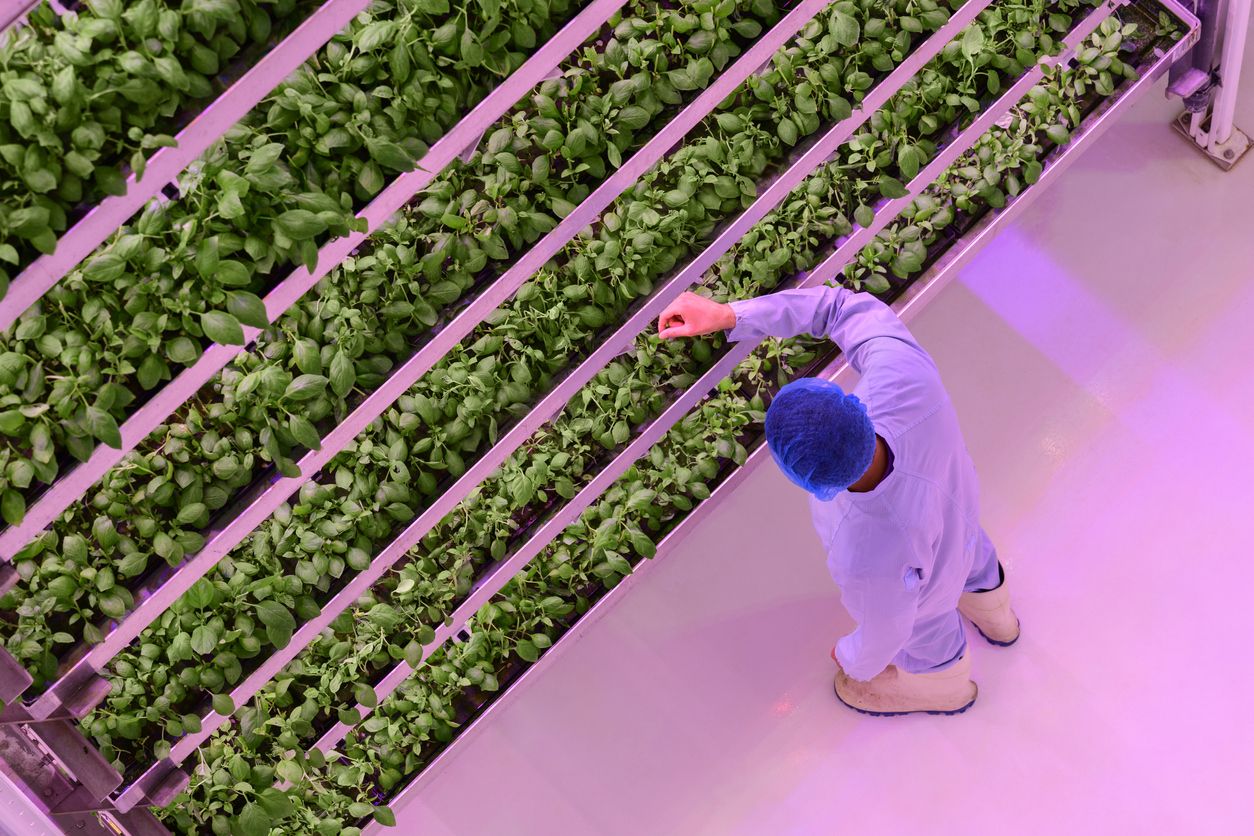
Artificial Intelligence based Smart Automation of Plant Factories for Agricultural Production
This research addresses the complex challenges associated with operating such vertical farms in plant factories. The project focuses on automation for energy management and maximization of natural resources using techniques based on artificial intelligence (AI) that help to optimize the microclimate in plant factories. Due to scarcity of environmental data available, reinforcement learning based AI algorithms will be used to develop an optimal microclimate control scheme that focuses on maximizing yield while minimizing energy cost and pesticide usage.
Akshay Ajagekar (GR- COE), Primary Advisor: F. You (COE), Secondary Advisor: Neil Mattson (CALS)
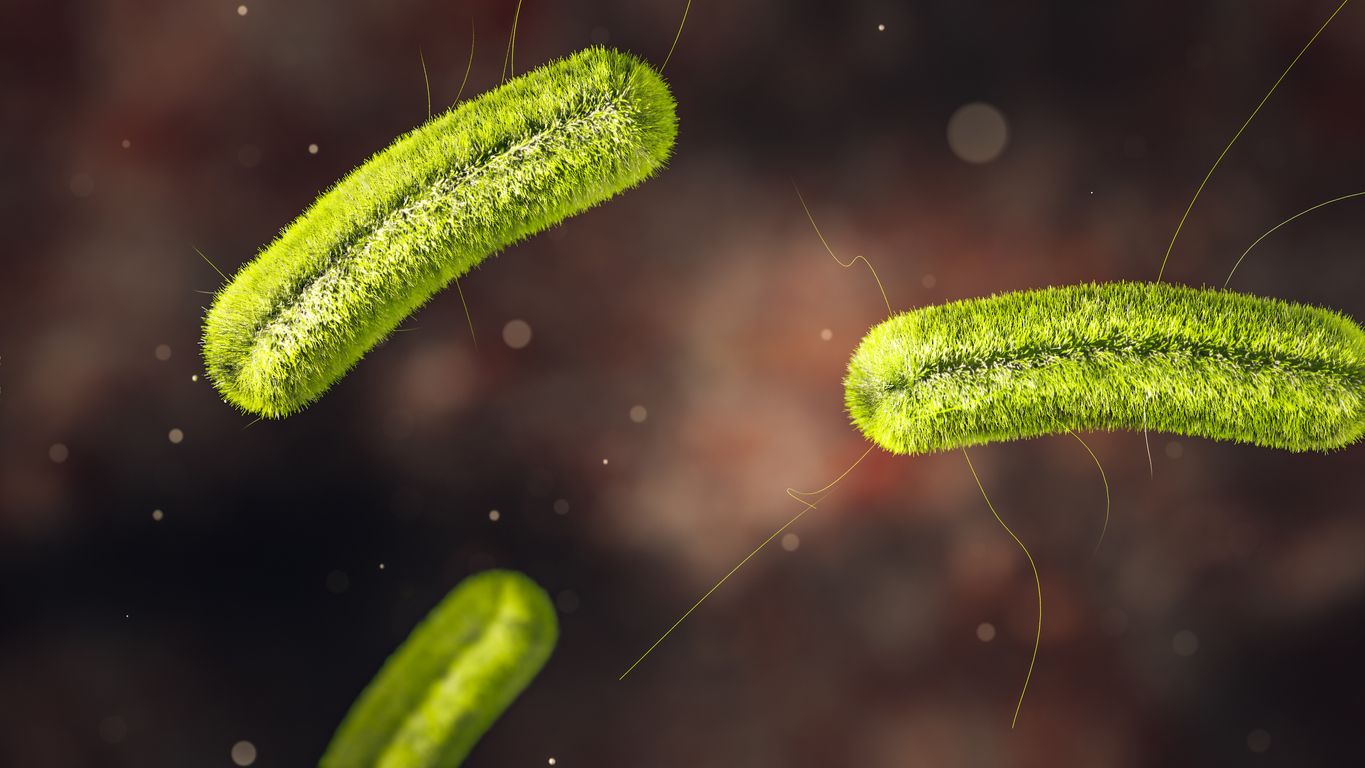
Knowledge, Health, and Social Drivers of Frozen Vegetable Consumption in Women of Childbearing Age
Consumer behavior, and regulations that anticipate that behavior, are integral components in food safety and disease prevention. Listeriosis, caused by food-borne pathogens, is particularly concerning in pregnant women and can cause miscarriage and fetal death. There are currently no FDA guidelines regarding Listeria monocytogenes (LM) contamination in frozen foods. This research investigates how women of childbearing age prepare frozen vegetable products to assess consumer behaviors that could be risky for LM exposure. To study frozen vegetable preparation and what factors influence this behavior, a questionnaire survey will be developed and distributed using the Google Survey Methodology (after obtaining research approval from Cornel IRB).
Hannah Rosenthal (UG- CHE), Primary Advisor: Renata Ivanek (CVM); Secondary Advisor: Alan Mathios (CHE)
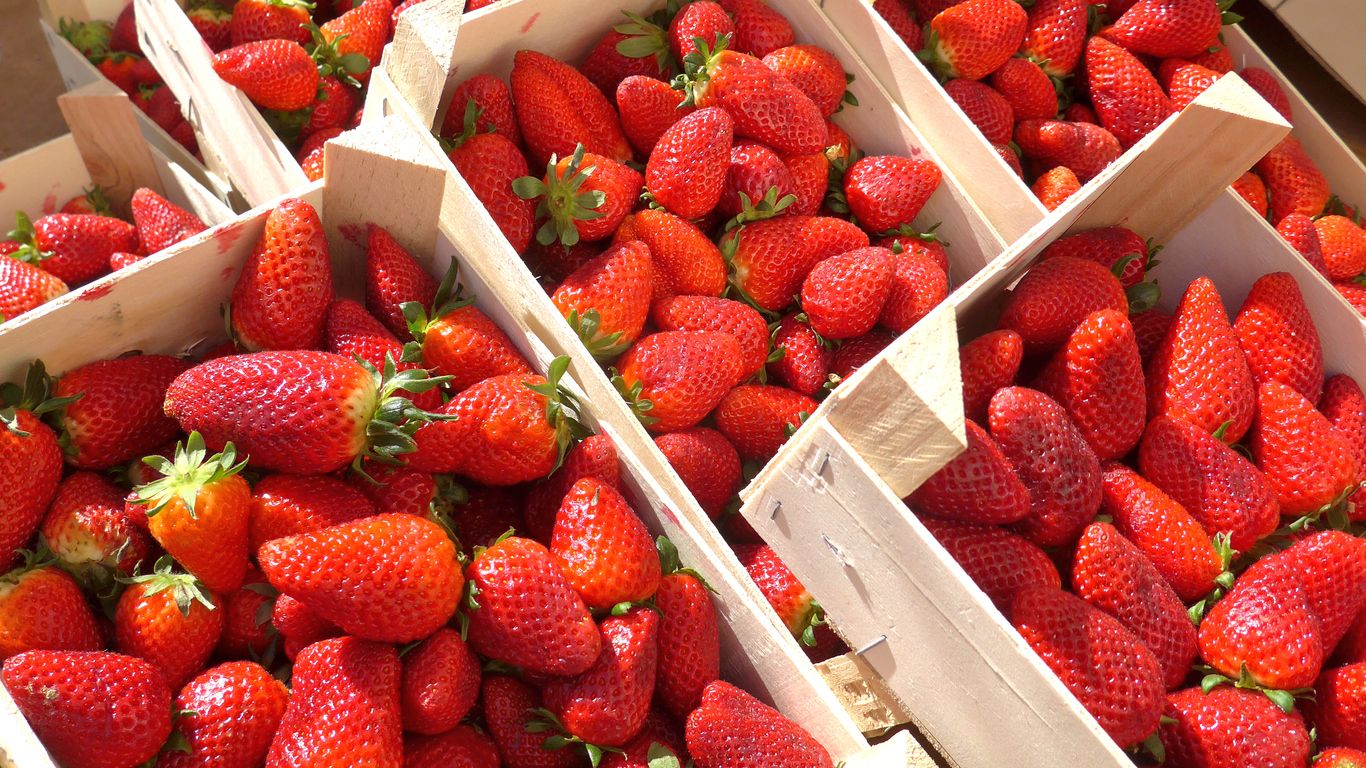
StraBot: a Soft, dexterous soft manipulator with hybrid sensing for strawberry harvesting and monitoring
Automating strawberry picking is the holy grail of agriculture. It is backbreaking work, the point at which you pick the strawberry is highly variable, and requires delicate touch when pulling. Soft robotics is a technology that has been developed over the past decade and can potentially solve this problem. Dr. Pritts is an expert in strawberry agriculture, and Dr. Shepherd is an expert in soft actuation and sensing. This work will finally explore the potential for soft robotics to solve this critical agricultural need by creating robotic manipulators that can pluck strawberries at high yield.
Rob Shepherd (COE), Marvin Pritts (CALS)

In Situ Nuclear Magnetic Resonance Monitoring for Improving Cassava Root Quality
The quality of most root and tuber crops is based on the amount of dry matter content and relates inversely to the amount of water content. This research proposes to apply a novel approach to above-ground measurement techniques through the use of a non-destructive surface nuclear magnetic resonance (SNMR) system. This less invasive approach will measure water and dry content in cassava in different settings – laboratory, greenhouses, and fields – as well as across the growing cycle. Additionally, the project will explore increasing the sensitivity of the SNMR receiver and reducing the drive current required for the SNMR transmitter in order to reduce the size and power consumption of SNMR systems and make field deployment viable for farmers and researchers alike.
Amal El-Ghazaly (COE), Mike Gore (CALS)
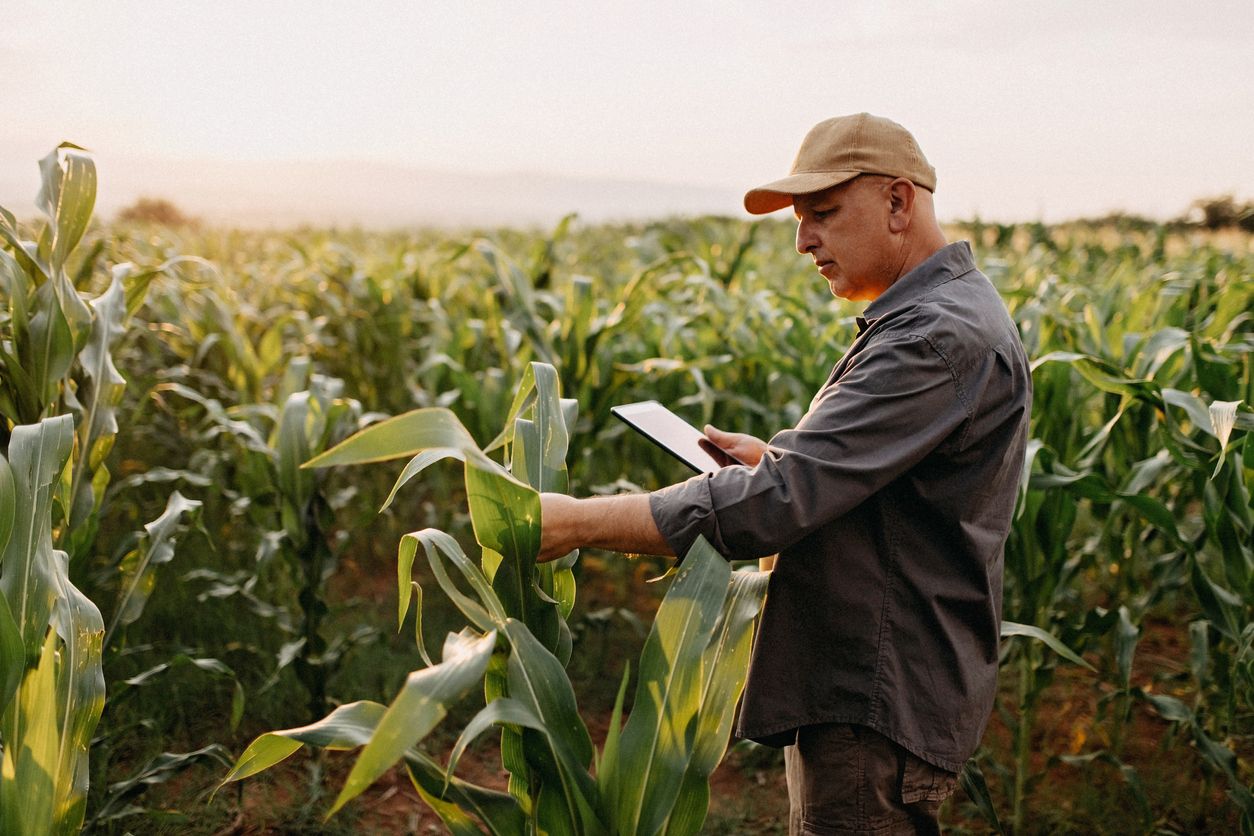
Dynamic Crop Height Measurement for N Management
The use of Nitrogen fertilizers in moderation can promote plant growth and boost crop yield, while in excess it can be harmful to the plant and the environment. By developing a system that can accurately capture the height of plants in a field, we can compare the rate of growth of different crops in response to N treatment and find the optimal time and amount of N to apply. An array of laser diodes paired with photoresistors will simulate a gate of light and through programming we can detect if the gates are either closed or open. This system works well in a controlled environment but in a natural environment, reflections from other surfaces and on a particularly bright day when there is a lot of natural light, are challenging. Throughout the 10 weeks of summer we will test new methods to improve sensor data.
Charles Smith (UG-COE), Primary Advisor: Louis Longchamps (CALS), Secondary Advisor: Joseph Skovira (COE)
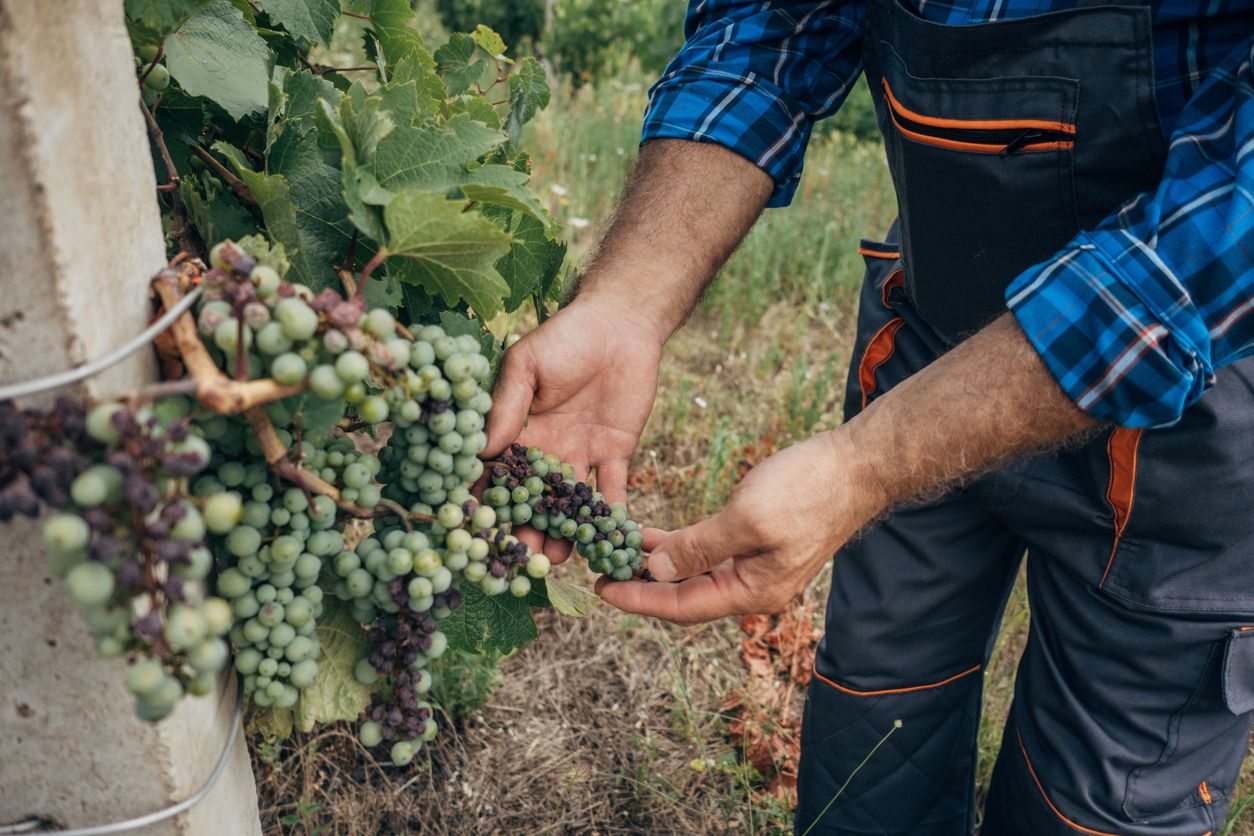
Accelerating the Application and Adoption of Remote Sensing Decision Support in Northeastern Viticulture
Current plant disease detection frameworks are inefficient and inaccurate because they primarily rely on human detection via scouting – the process of physically visiting a field and looking for disease. By the time disease is discovered, the period of time when management intervention would be most effective has long passed. My research with the Gold lab combines remote sensing, high resolution satellite imagery, with environmental data to optimize disease detection in vineyards. Throughout the course of our project, I will design a novel disease prediction scheme that combines DMCast, an existing disease risk model, with spectroscopic imagery within a deep learning architecture. Once trained on historical data, this model can be integrated into computer vision techniques that extract insights from satellite imagery, creating a powerful framework for the future of vineyard disease management.
Somil Aggarwal (UG-COE), Primary Advisor: Katie Gold (CALS), Secondary Advisor: David Shmoys (CIS)

Improving strawberry yield through native and robotic pollinators
The proposed work will integrate automated monitoring of wild and managed pollinators with cutting-edge robotic pollination, laying the groundwork for a bio-hybrid system capable of observing, predicting, and improving yield in pollen-limited crops. Specific innovations include durable, low power insect camera traps, mobile end-effectors for local electrostatic pollination, rapid cross-pollination by quadcopters, and growth models conveyed to the farmer through an online app. These technologies will be validated with strawberry plants over several bloom cycles in the greenhouse, and through field experiments in a commercial farm. Short term, these technologies can be seamlessly integrated into current farm practices. Long term, they may be managed by automated schedulers to ensure optimal yield long before harvest. In a broader sense, this research opens a new frontier in precision agriculture, where robots not only have the intelligence to overcome the challenges of field deployment, but can operate as part of the natural ecosystem around crop plants.
Kirstin Petersen (COE), Scott McArt (CALS)

New soil robotics and sensing for soil-root phenotyping of water-use effectiveness
Soil, the microbiome, and plant roots represent a critical frontier in agricultural science and practice. The opacity, heterogeneity, and dynamic nature of soils have severely limited in situ studies, phenotyping, and precise interventions as part of soil and crop management. Here, we will develop two innovations to access real-time information about the availability and flow of water in the rhizosphere: 1) a sensing strategy to provide sub-millimeter resolution of water relations (potential, content, and conductance) within the rhizosphere, in situ; and 2) a soil-swimming robot to provide semi-autonomous exploration of the root zone with multiple sensing modalities. We will pursue experiments with our emerging capabilities guided by scientific questions about roots and rhizosphere to drive new approaches to field-based phenotyping and management of irrigation and fertigation. The technology will lead to improved management of grain, horticultural, ornamental and tree cropping systems. Our project emphasizes a systems-based, trans-disciplinary approach and seeks to enhance and apply new innovations and technology to include below-ground phenotyping (e.g. rhizosphere plant-soil interactions), sensor technology (e.g., real time soil water flux), robotics (e.g., spatio-temporal environmental sampling).
Taryn Bauerle (CALS), Robert Shepherd (COE), Mike Gore (CALS), Johannes Lehmann (CALS), Abe Stroock (COE)

Accelerated and automated stress diagnostics in apple orchards
Apple orchards suffer from large numbers of diseases that can incur serious damage to trees, fruits, and the industry. Effective disease control methods rely on accurate, early diagnostics to implement successful and environmentally-sound management. As disease symptoms vary widely due to age of infected tissues, genetic variations, and light conditions within trees, it is challenging for computer vision models to accurately distinguish between the symptoms of different diseases. Our team of plant pathologists, phenotyping experts and computer vision scientists will develop computer vision models to accurately distinguish between the symptoms of many diseases that can incur serious damage to fruits and fruit trees. We will develop user-friendly apps to enable extension educators and consultants to support growers, and empower them to independently scout their orchards and provide accurate early diagnostics as the basis for successful and environmentally-sound disease management. Based on this work, we aim to lead a global challenge competition in the Fine Grained Visual Classification (FGVC) workshop at the Computer Vision and Pattern Recognition 2020 conference to find novel solutions to major challenges in computer vision.
Awais Khan (CALS), Serge Belongie (CIS), Noah Snavely (CIS)

Carbon farming: Combining machine intelligence, big data and process models to support this emerging sector
Restoration of soil organic carbon plays a critical role in addressing climate change while improving agricultural efficiency and reversing land degradation. However, scaling up of soil carbon sequestration is impeded by the high cost of monitoring, and by high levels of uncertainty in soil carbon predictions. Current soil organic carbon maps are based only on spatial interpolation of geographic, environmental, and climatic co-variates. As such, they do not distinguish the impacts of land management, including factors such as tillage regimes, crop rotations, crop and varietal selection, residue management, manure management, irrigation, cover crops, soil and water conservation etc. To provide an improved soil carbon maps that include these factors, we will train and validate machine learning and deep learning models using detailed spatial data on soils, vegetation, climate, and cropping practices. This project aims to create a step change in the accuracy of prediction of soil organic carbon by combining Cornell’s state-of-the-art soil mechanistic modeling with machine learning, deep learning, and spatially-explicit big data to create a “grey-box digital twin”. This will provide a platform to drive evidence-based policy and support massive scaling up of optimized investment in soil health and climate-change mitigation.
Dominic Woolf (CALS), Johannes Lehmann (CALS), Fengqi You (COE)
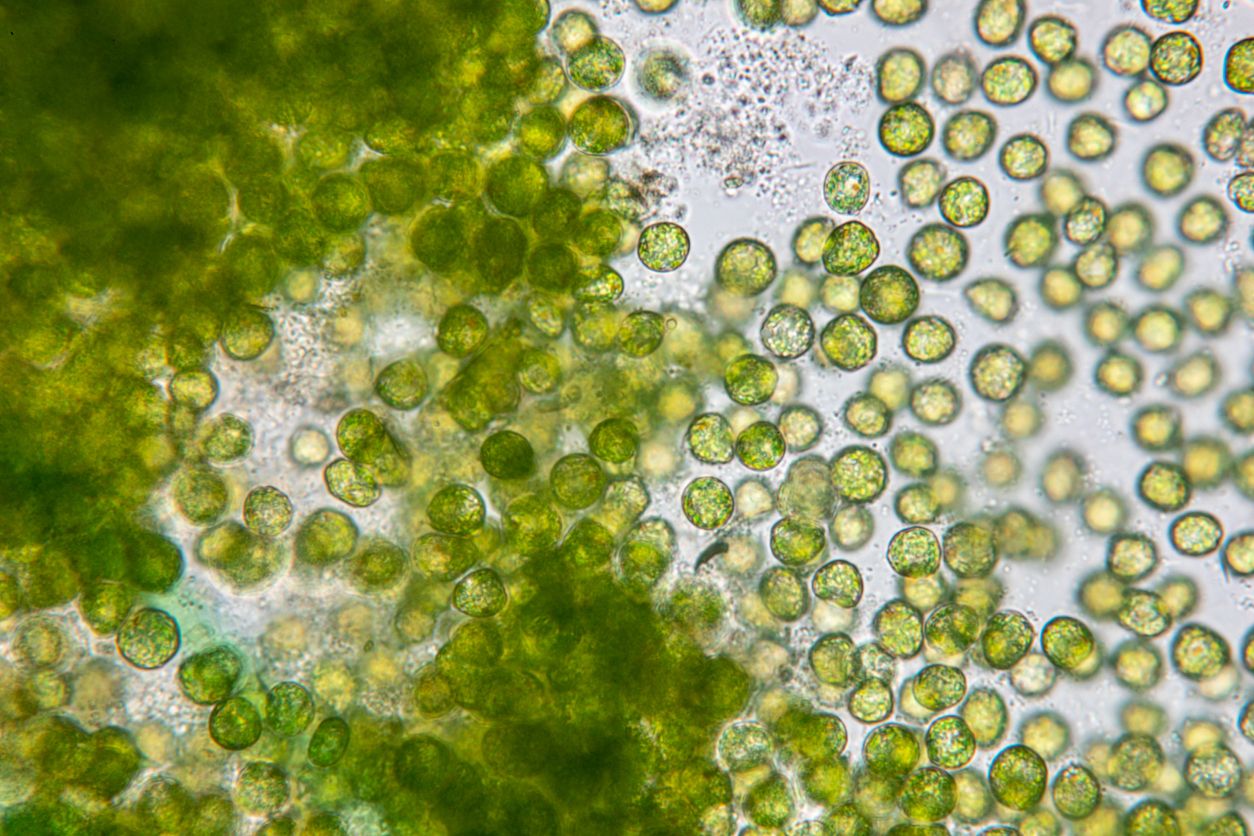
Function-targeted high-resolution phenotyping platform to deduce genetics-functions relationships in rhizomicrobiome for promoting plant nutrients utilization
Rhizo-microbiome research is in its infancy and holds the key to a better understanding of plant-microbe interactions with a positive impact on plant health, productivity and agricultural sustainability. This study will leverage innovative single-cell Raman microspectroscopy (SCRM) technology and computational science to develop a novel and integrated phenotyping-genotyping technology platform as the basis for building a world-class agricultural phenotyping facility at Cornell. The complexity of the SCRM dataset, due to its size and composition, with low abundance of mostly unknown species (as expected for rhizomicrobiome), demands complicated dimension reduction and classification methods to achieve the desired performance. The goal is to discover and profile new and in situfunctionally-relevant microorganisms, such as polyphosphate accumulating organisms (PAOs) that contribute to P utilization, and carbon (PHB, glycogen)-accumulating organisms (CAOs) involved in nitrogen fixation, among others, and to establish gene-function relationships by correlating phenotypic and genotypic profiles. Discoveries made on this project will advance the technological, biophysical and socio-economic knowledge needed to shift the paradigm towards better management of land and water resources to ensure food, energy and water security in intensified agricultural regions such as New York State.
April Gu (COE), Jenny Kao-Kniffin (CALS), Kilian Weinberger (CIS)

Scalable digital sensors of the skies and soils: An Internet of Things approach to improve farm-scale weather forecasts of extreme heat, drought and rainfall
Extreme weather is a serious threat to agriculture, economic vitality, human safety, and physical infrastructure in farming communities throughout the world. Climate change is likely to increase the risk of severe weather, particularly heat waves, droughts, and floods. To flourish in spite of these hazards, farmers, growers, agro-business, and food producers require a toolkit of political, infrastructural, and technological resources to manage the risk of extremes. Numerical models of weather and climate will be among the most important of these tools because they empower decision makers with information to anticipate and prepare for consequential events. The proposed research will monitor and forecast key variables for predicting extreme weather at State, County, and Farm scales in the Northeast by leveraging an existing wireless “Internet of Things” (IoT). We will develop open source tools for numerical weather and climate prediction to empower decision makers with information to anticipate and prepare for consequential events, and to provide farmers, growers, agro-business, and food producers with a toolkit for predicting key hazards to agriculture, particularly during the warm season when extreme rainfall, heatwaves, and droughts often exact severe crop losses.
Toby Ault (CALS), Max Zhang (COE)
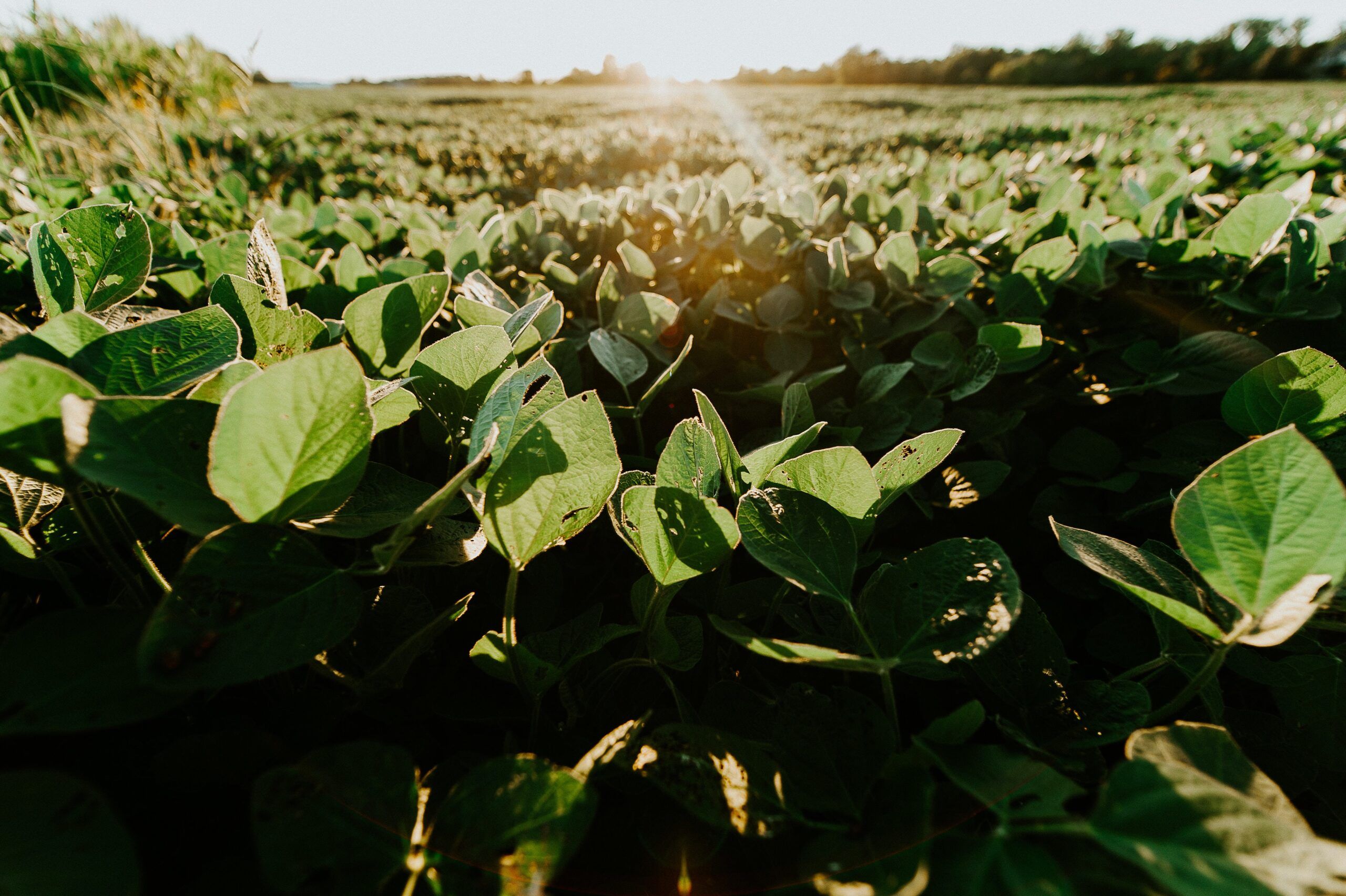
Remote-sensing based framework for farm-scale in-season crop yield forecast
This proposal aims to develop scalable, field-scale, in-season forecast approaches for crop yield at low cost by synergistically integrating new technological advances including UAV/satellite remote sensing of Solar-Induced Chlorophyll Fluorescence (SIF) and hyperspectral reflectance, the state-of-art mechanistic crop growth models, and machine learning techniques. We propose to develop both process- and statistics-based approaches for yield forecast and examine their complementary strengths for large-scale operational application. We will finally build a Google Earth Engine based web portal to report yield forecast on weekly basis to inform farmers, agribusinesses, and extension agents in near real time. We will seek input and feedbacks of our developed framework from local farmers via Cornell Cooperative Extension and New York Corn and Soybean Grower Association during the course of the project.
Ying Sun (CALS), Carla P. Gomes (CIS), Ariel Ortiz-Bobea (JCB)
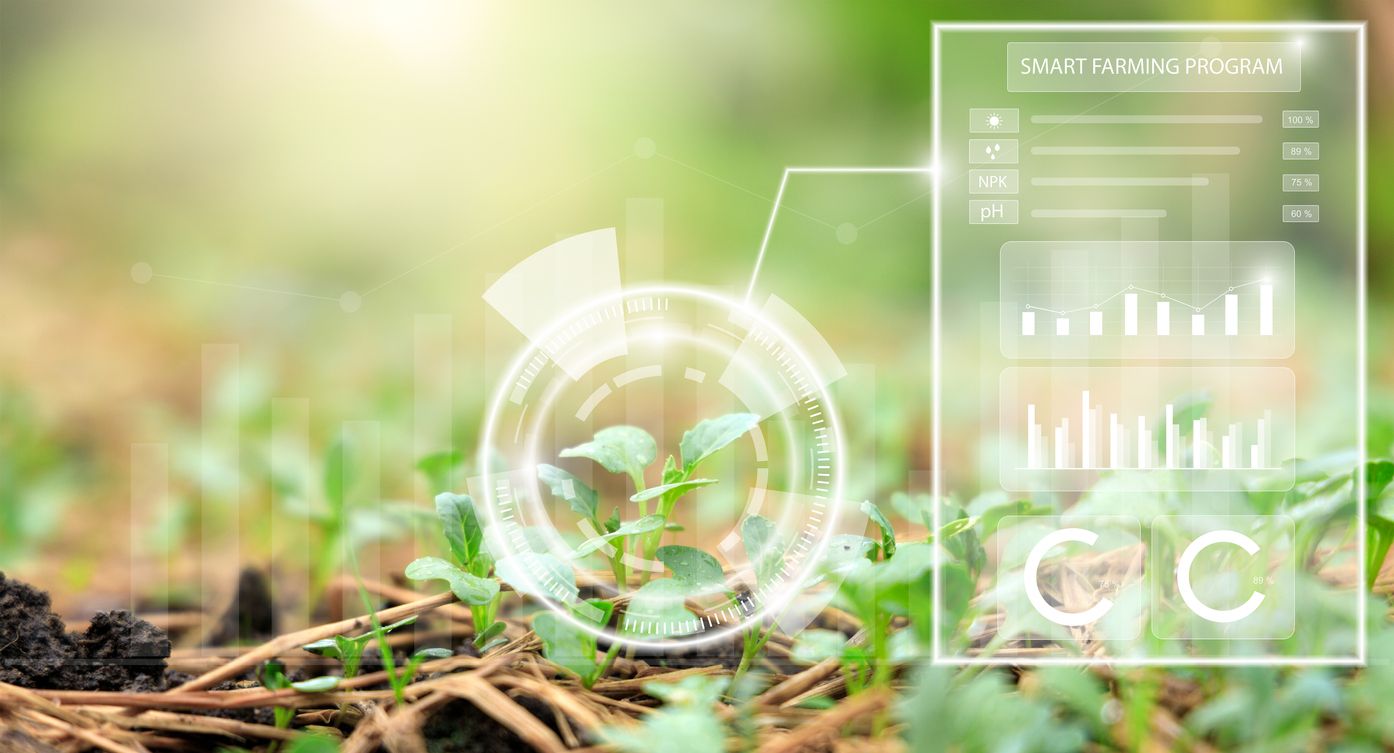
Internet of Dirt
In recent years, Internet of Things (IoT) infrastructures have expanded into the field of agriculture. Some of the applications for IoT in this context includes precision agriculture, livestock monitoring, and smart greenhouses. While these systems are designed in specific ways to fit their environment, they may degrade and fail in unexpected ways that require replacement and repair. In this research, I will study the maintenance of IoT infrastructures in the context of agriculture through 1.) conducting ethnographic field work and 2.) generating design implications for future IoT systems for agriculture. Over the course of the summer, I will examine the interactions between farmers, technicians, IoT infrastructures, and the environment as a way to understand how these systems are maintained across different field sites. These field sites will build upon existing collaborations with CIDA and will include farms that have implemented IoT systems. The fieldwork methods will include participant observation, semi-structured interviews, and design probes as a way of gaining key insights on how these IoT systems are maintained. I will then generate design implications by identifying mismatches between practices at the field sites and current design directions as a way suggest how systems could better meet the needs of the farms. These design implications will support the development of future development of IoT systems for agriculture at local, regional, and global scales.
Jennifer Liu (GR- CIS), Primary Advisor: Steve Jackson (CIS), Secondary Advisor: Phoebe Sengers (CAS)
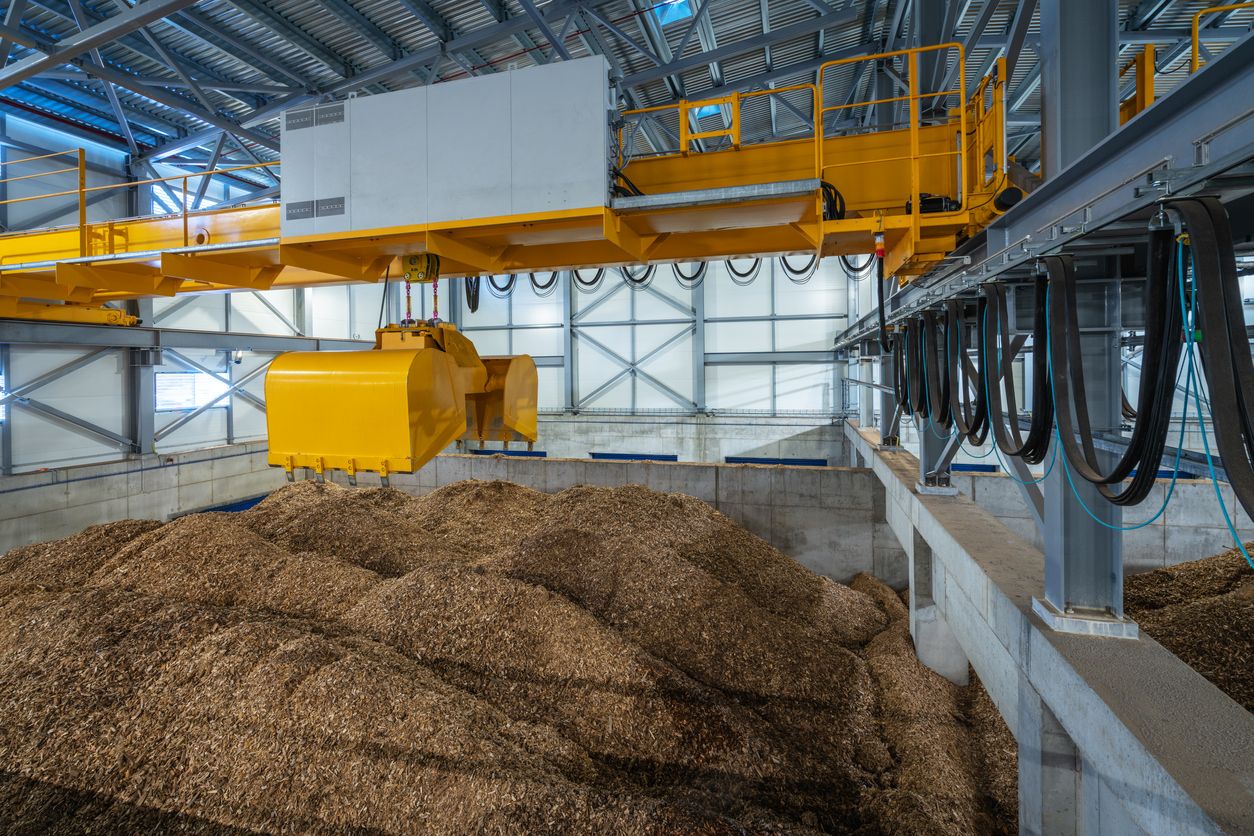
Digital Tools for Systems Analysis and Data Analytics of Biomass Pyrolysis in Agriculture
Biomass is a promising source of renewable energy with eco-friendly characteristic receiving great attention especially in Digital Agriculture communities. Biomass pyrolysis is the thermal decomposition of biomass occurring in the absence of oxygen. Depending on the final temperature and reaction time, pyrolysis technologies can be classified into two types: slow pyrolysis and fast pyrolysis. The yields as well as the physical and chemical characteristics of the products vary considerably according to the types of pyrolysis technologies. This research project is to study the environmental impact of spatial analysis of biomass processing considering specific pyrolysis technologies under economic and environmental criteria. By performance life cycle and techno-economic analysis/optimization biomass supply chains, we leverage data science and systems engineering methods with agricultural systems. We adopt life cycle optimization method to balance both the techno-economic and life cycle environmental impact objectives. Two major activities of my work are life cycle assessment and systems modeling. In life cycle assessment, we evaluate the global warming potential (GWP) of different pyrolysis technologies using existing technology data and Ecoinvent V3.5. In problem modeling, a bi-objective optimization model is formulated in order to balance the economic and environmental objectives.
Ning Zhao (GR- COE), Primary Advisor: Fengqi You (COE), Secondary Advisor: Johannes Lehman (CALS)
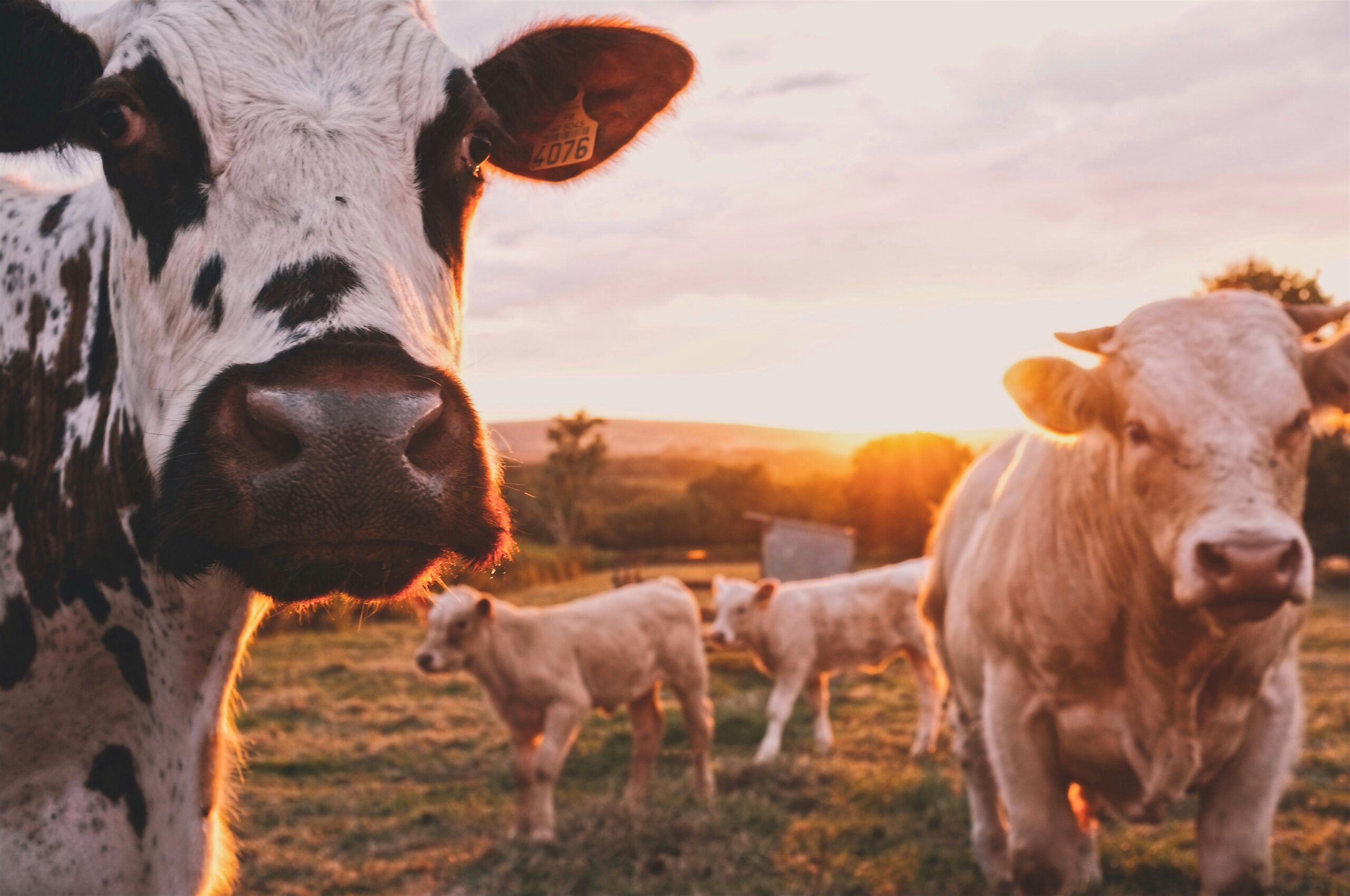
ReproPhone and e-Synch: Novel Tools to Automate and Optimize Cattle Reproductive Management
Main goals are to develop; 1) e-Synch; an intravaginal reusable device to automate synchronization of ovulation and monitor physiology of cows and 2) ReproPhone; a user-friendly, rapid, low-cost tool to determine pregnancy and ovarian status of cows on-farm. The e-Synch consists of an electronically controlled device loaded with products to synchronize ovulation and sensors to monitor cow activity and temperature. Briefly, user inserts e-Synch and selects desired treatment with a mobile app. Next, e-Synch automatically delivers hormones required for the selected protocol. Once protocol is completed, e-Synch is removed and the cow is inseminated. On the other hand, ReproPhone consists of a lateral flow immunoassay (LFIA) to quantify circulating reproductive hormones coupled with a portable imaging device connected to a mobile app. Specific activities: 1) Evaluate efficacy of e-Synch. Conduct field trials to evaluate the ability of current prototype to deliver hormones used for synchronization of ovulation. Based on initial tests we will work with Dr. Erickson’s group to improve the design and function of the device. 2) Optimize current LFIA. Currently our LFIA and reading system is designed to test plasma samples, which is not ideal for on-farm implementation, as samples need to be processed before testing. Therefore, I will work on modifying current format to measure hormones in unprocessed whole blood samples. Activities include laboratory experiments and on-farm testing.
Magdalena Masello Souza (GR- CALS), Primary Advisor: Julio Giordano (CALS), Secondary Advisor: David Erickson (COE)

Improving Vineyard Management Using Touch Plant Vein Detection through Machine Learning and Computer Vision
Advances in computer science have led to programs capable of identifying plant parts (e.g. flowers and fruit). This project will utilize these advances to tackle the challenge of using computer vision and machine learning to identify leaf venation in plants. In addition to moving water and sugars through the plant, veins transport macromolecules (RNAs and proteins). My thesis is to visualize this movement; this project will focus on imaging this process. Aim 1) To analyze the shape of venation in the leaf, a water-mobile dye will be added to the roots, taken up by the xylem and carried into the leaves. In a healthy plant, this happens very quickly. The resulting leaves are then imaged under a fluorescent microscope. Analyzing the results are difficult due to a high amount of noise in the images. Traditional segmentation fails to quantify the amount of fluorescence in the leaves. Aim 2) To solve this problem, we will create an automated imaging pipeline for detection of fluorescence in leaves. I will develop a computer vision approach with Professor Bharath Hariharan (CS). This will require the generation of a training set (produced in aim 1) that teaches the computer how to “see” veins. After training, the program performance will be tested against human annotated images. A successfully trained program will be able to automatically detect the presence of fluorescence within dynamic plant veins.
Hannah Thomas (GR- CALS), Primary Advisor: Margaret Frank (CALS), Secondary Advisor: Bharath Hariharan (CIS)
Become a Fellow
Stay up to Date
If you have a disability and are having trouble accessing information on this website or need materials in an alternate format, contact [email protected] for assistance.
CIDA Copyright 2023 | CIDA is an equal opportunity employer | Terms of Use | Privacy Policy